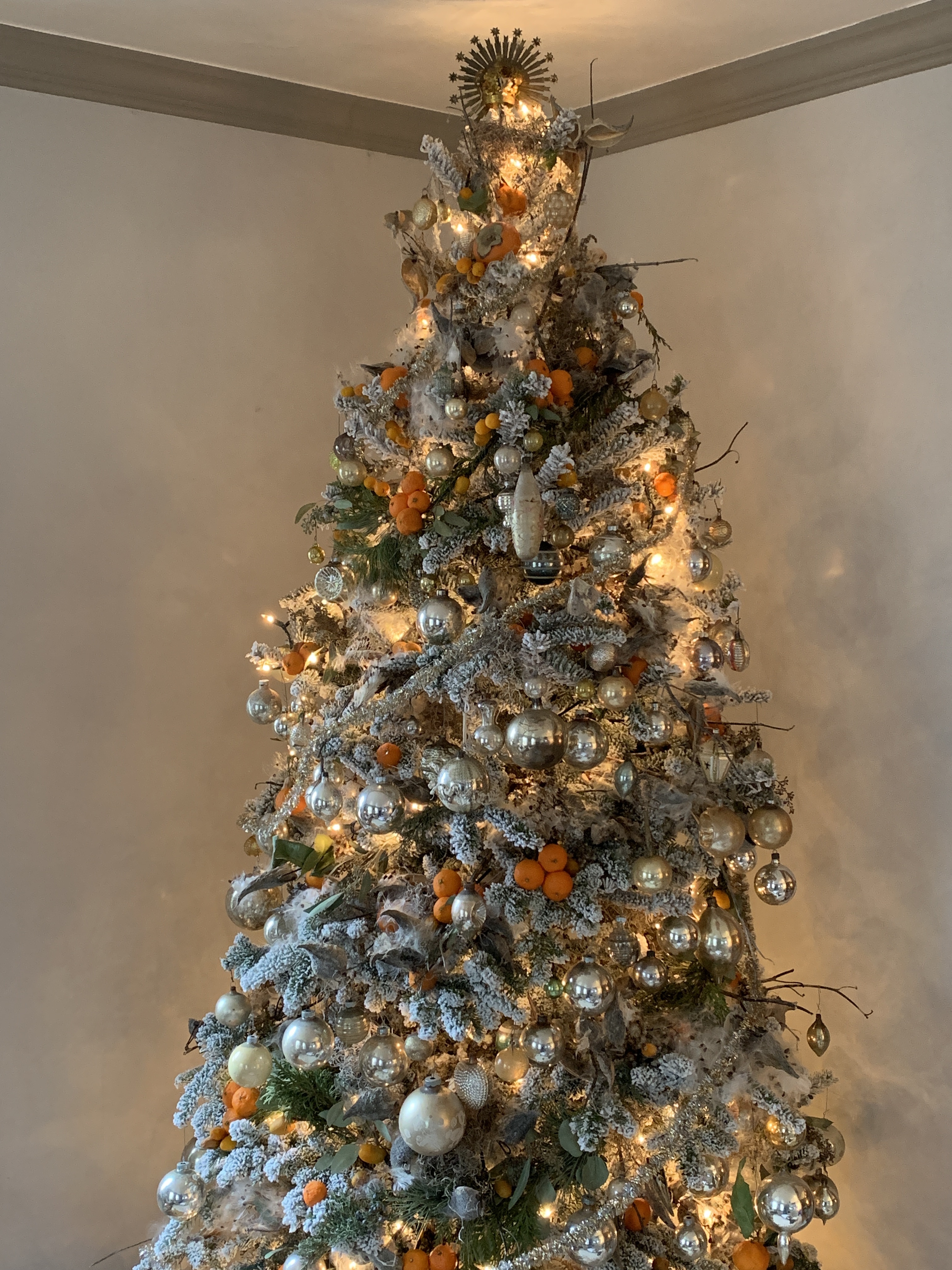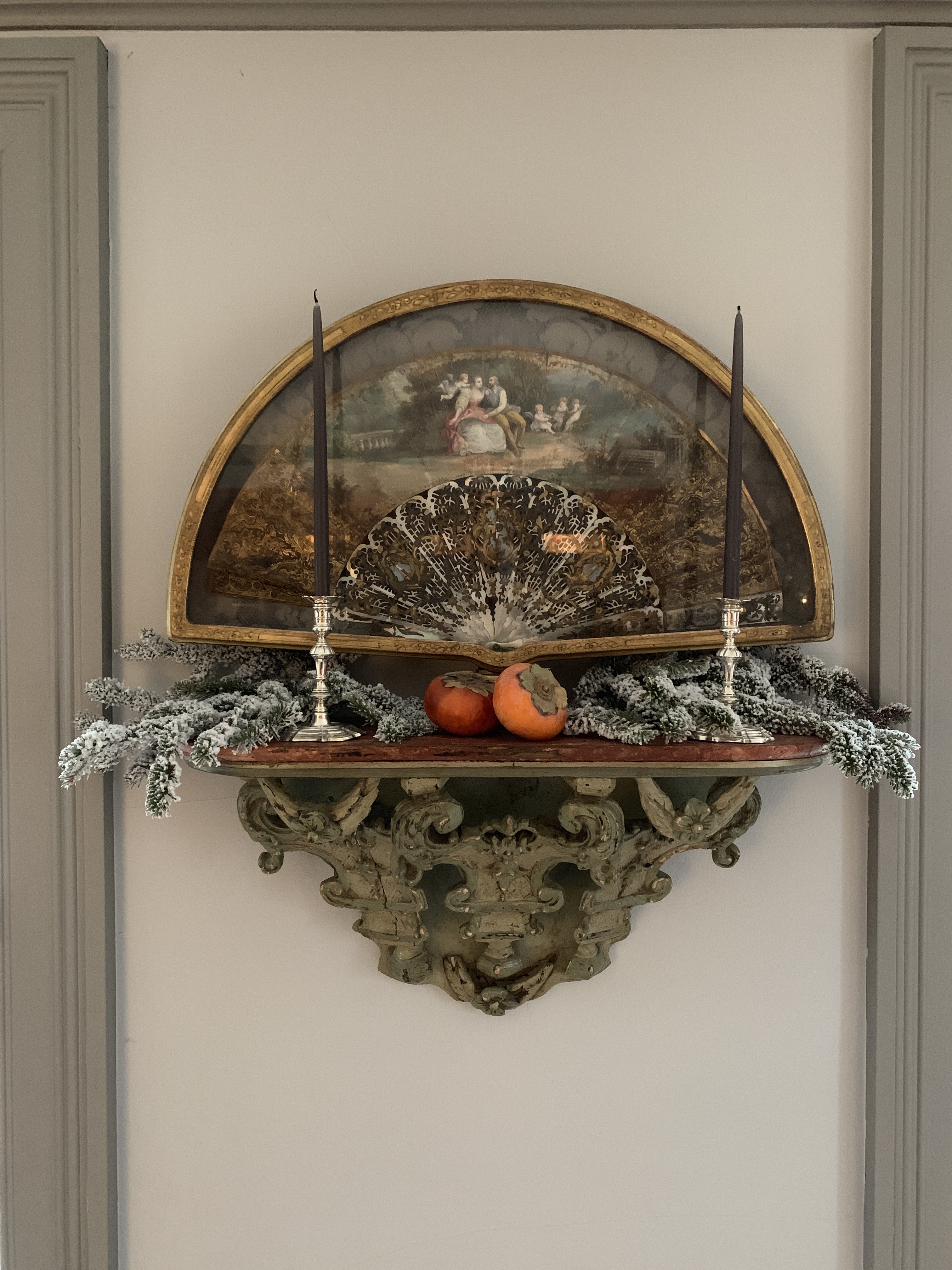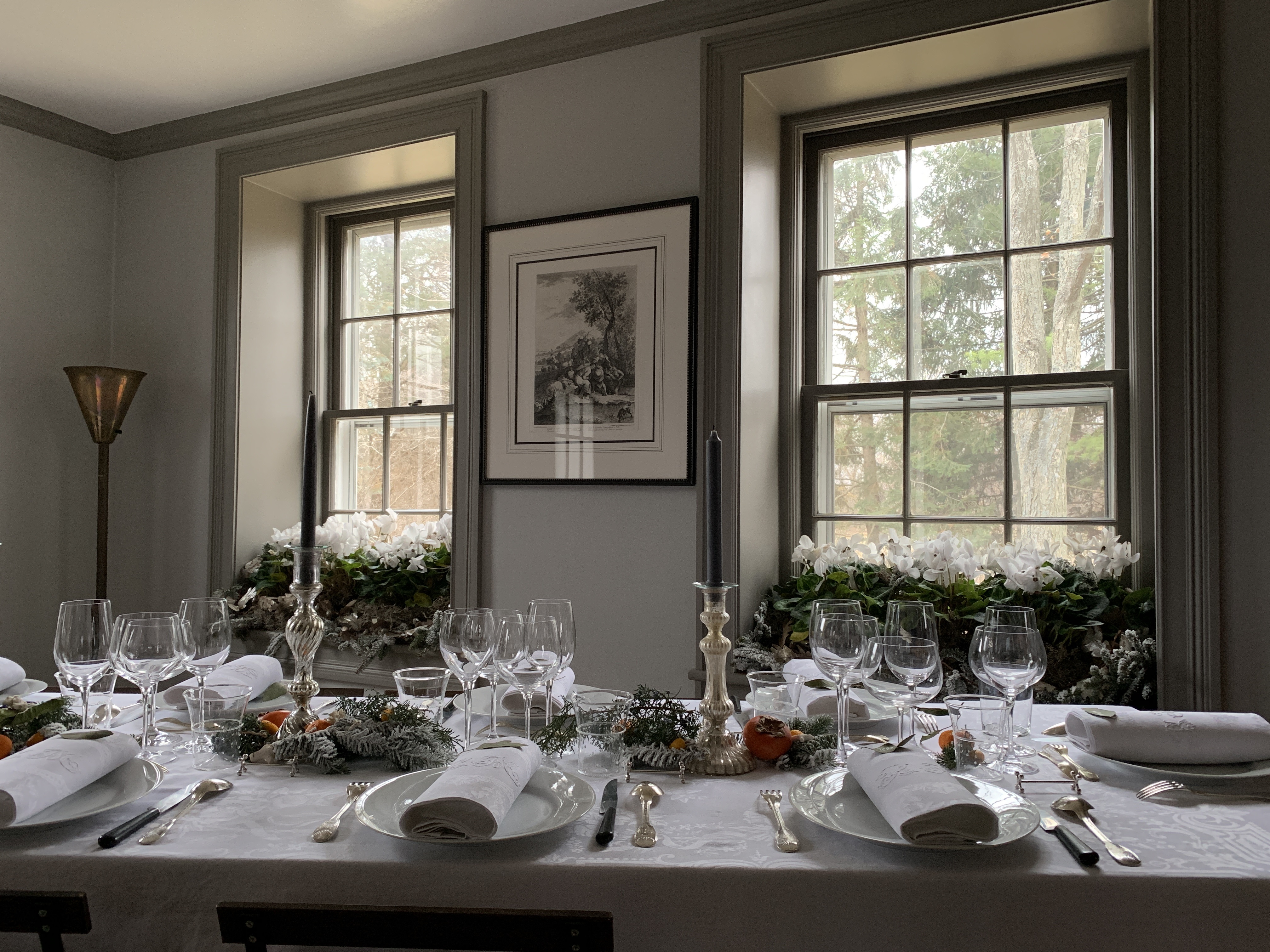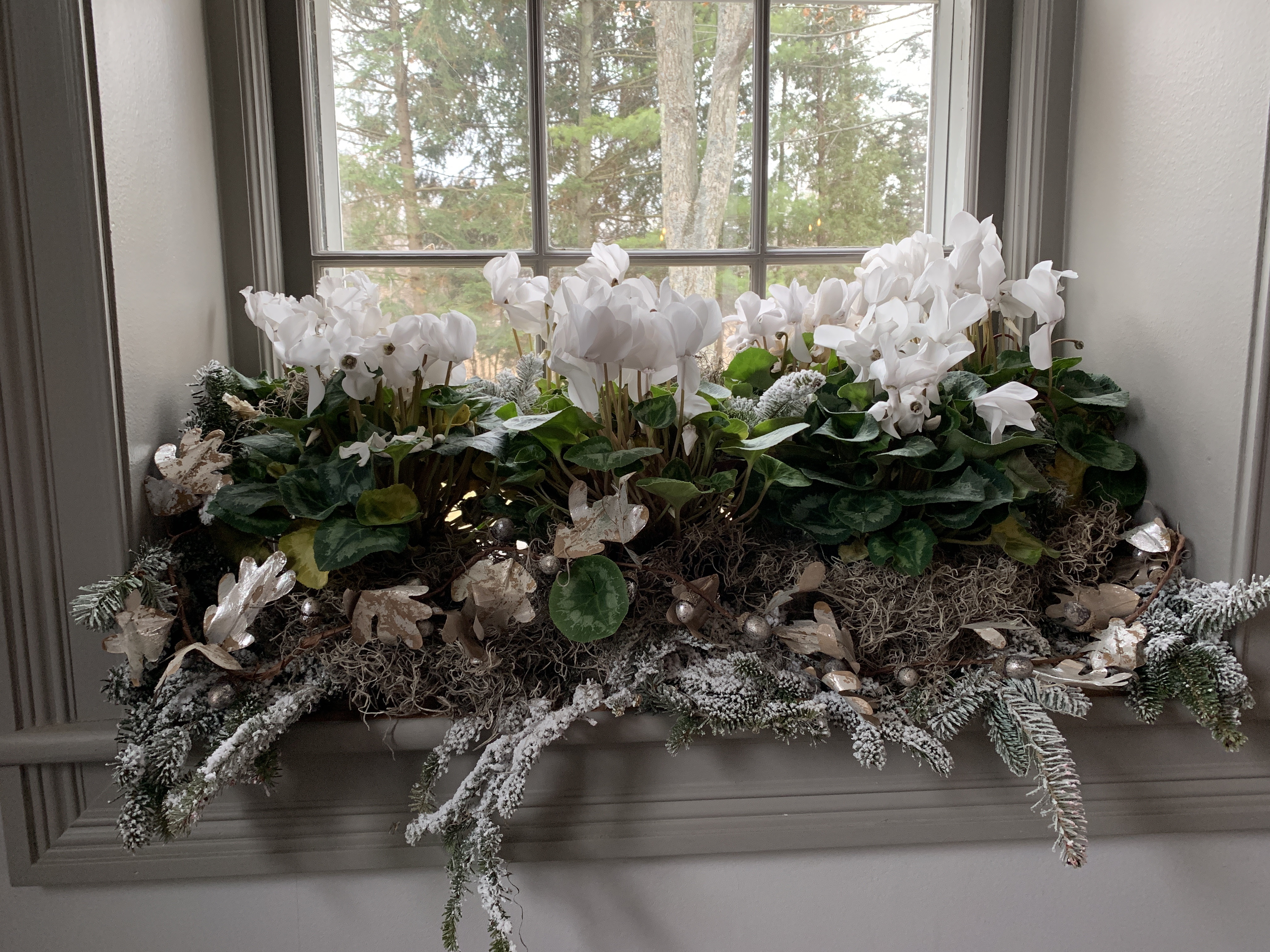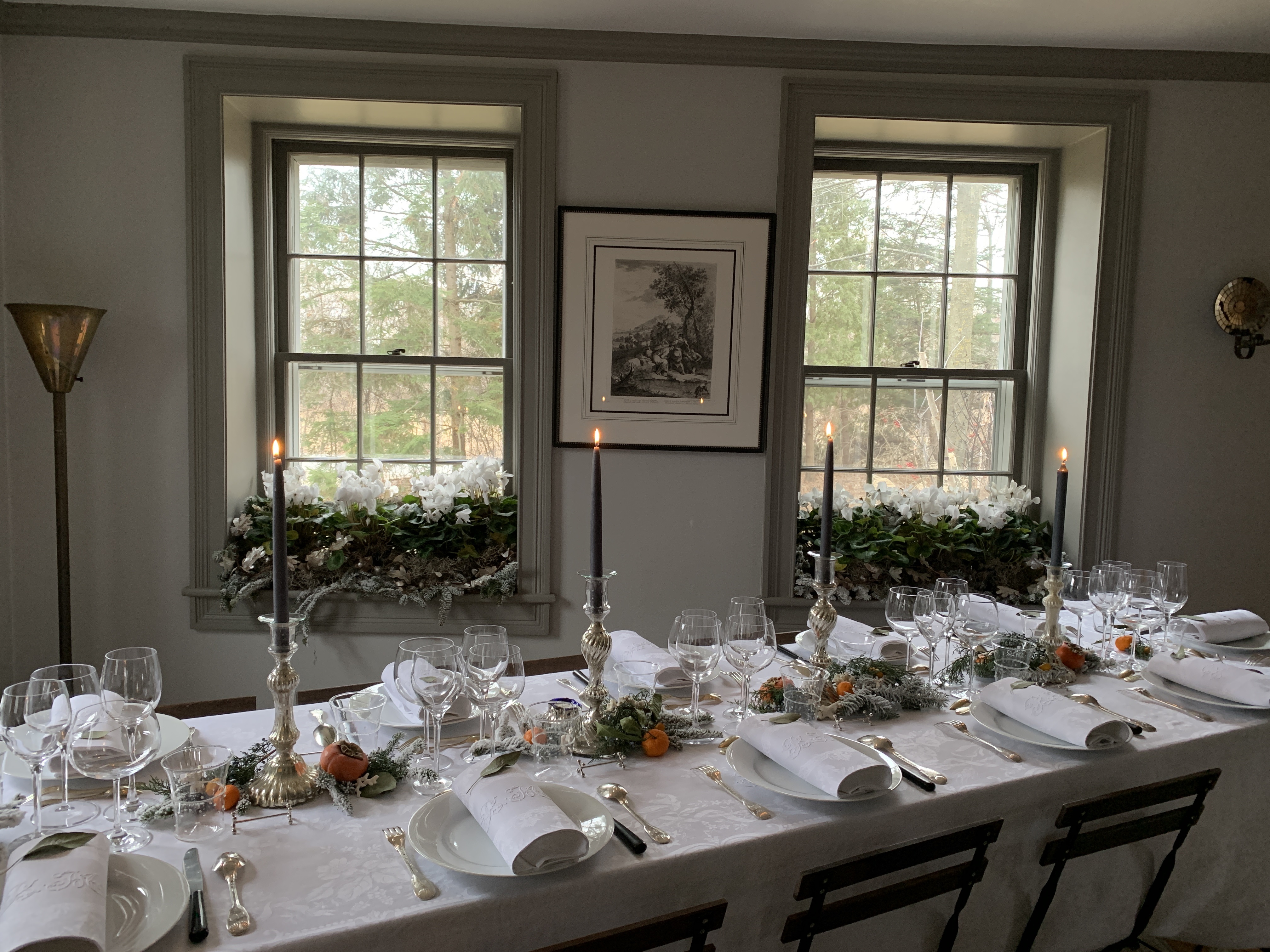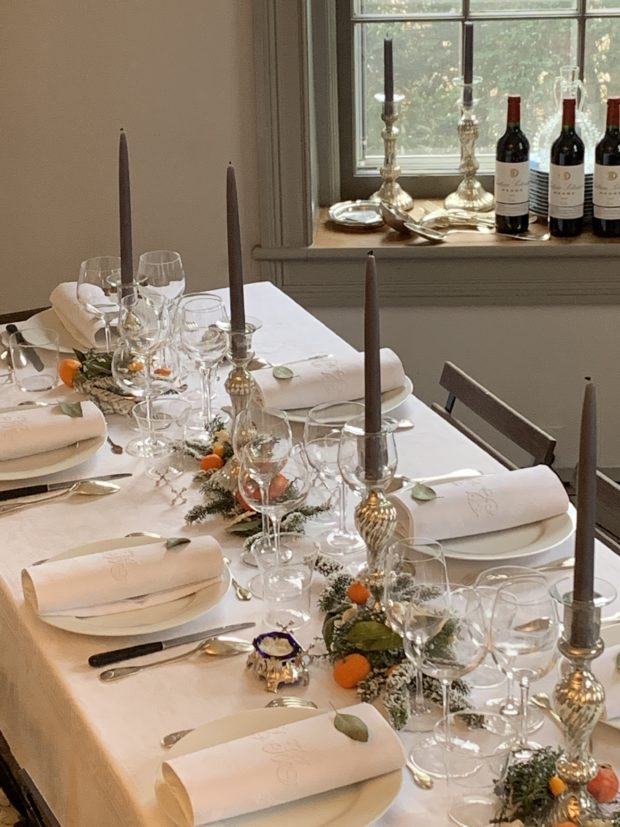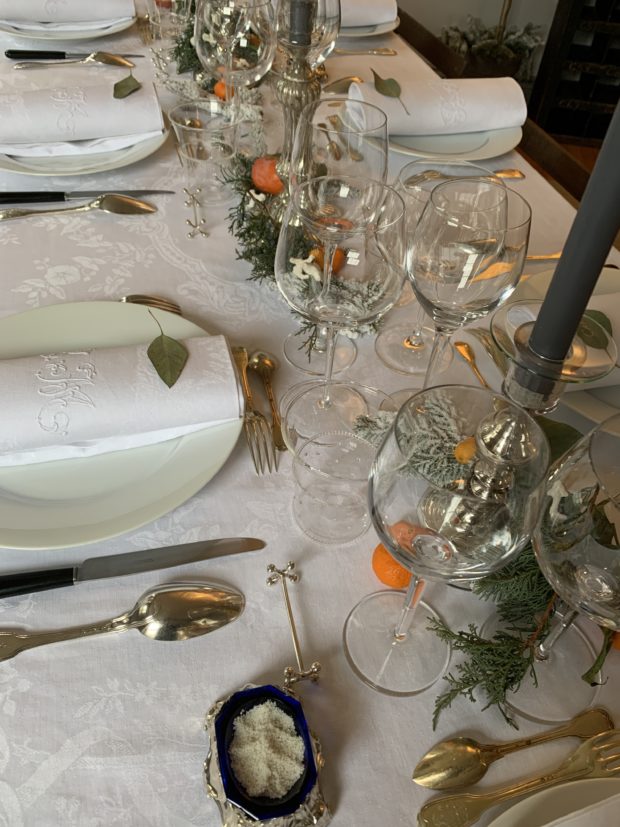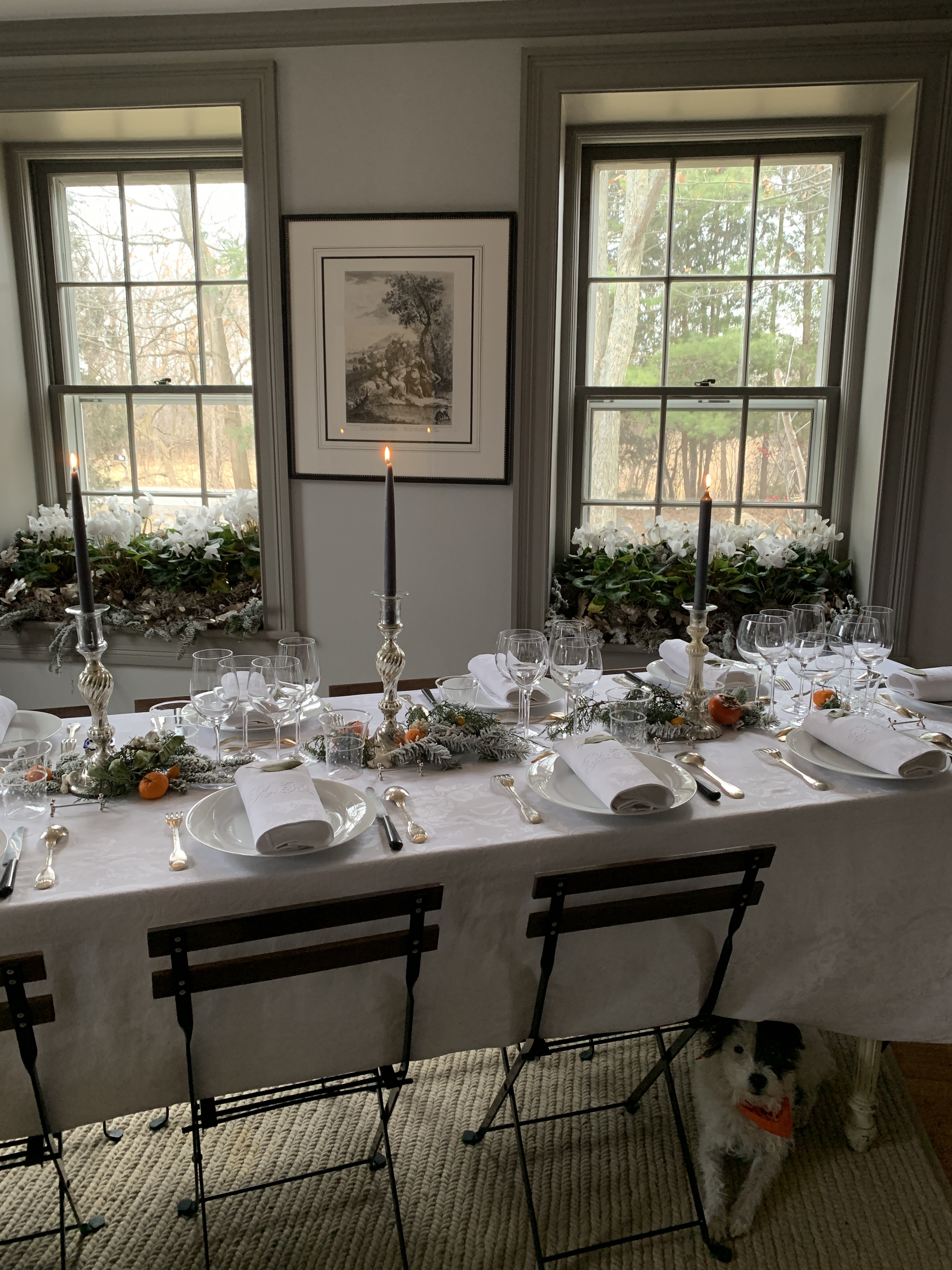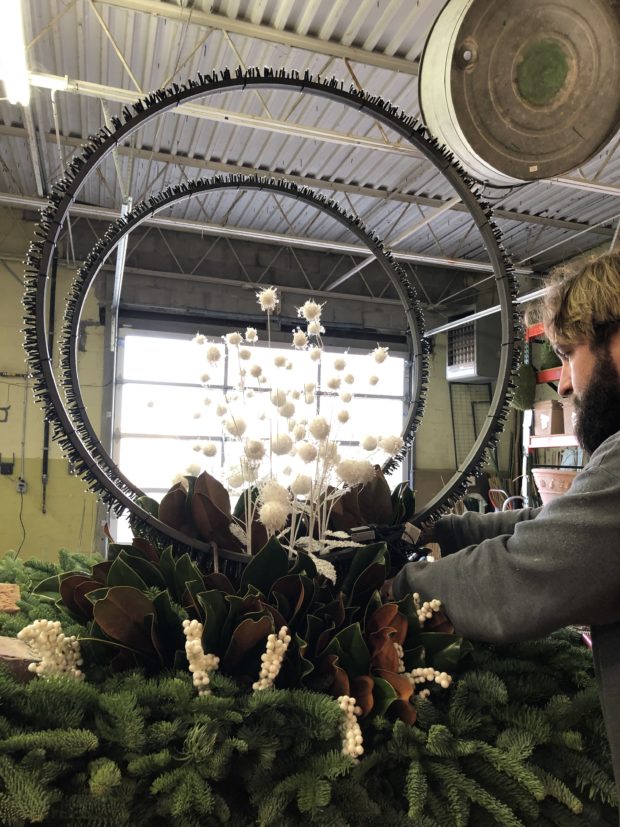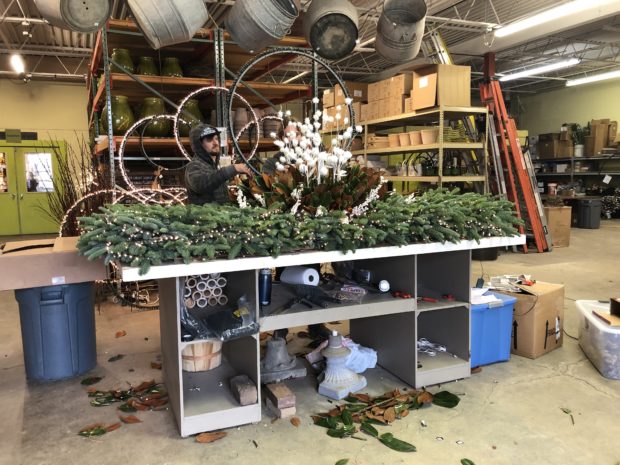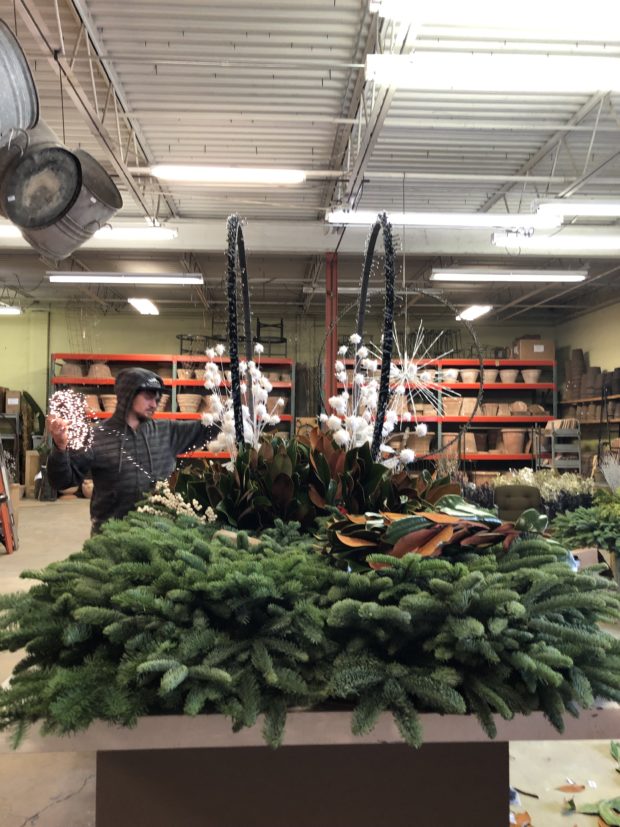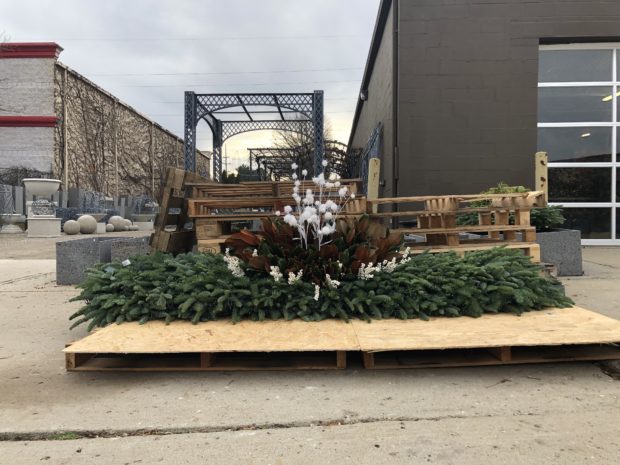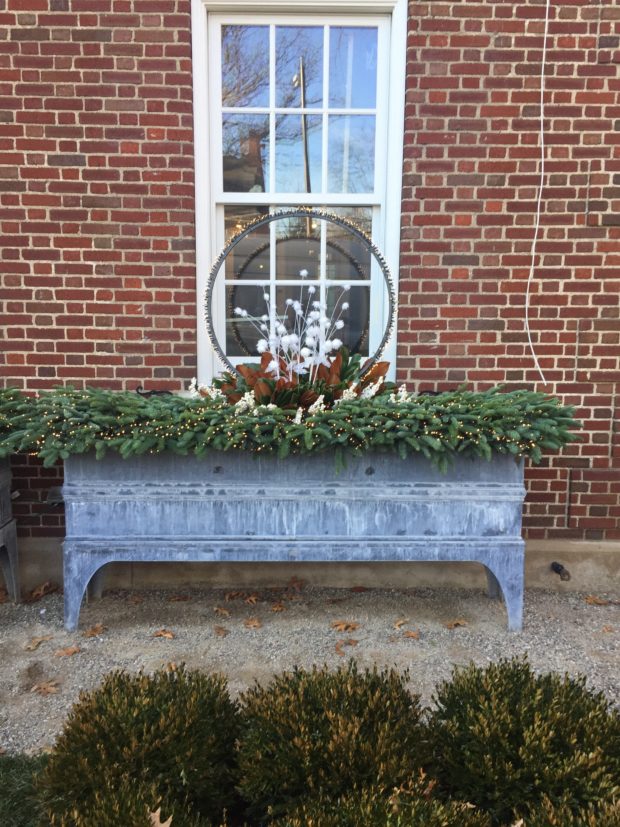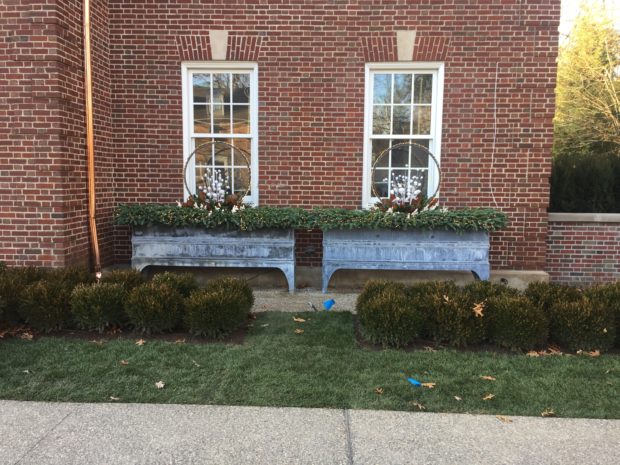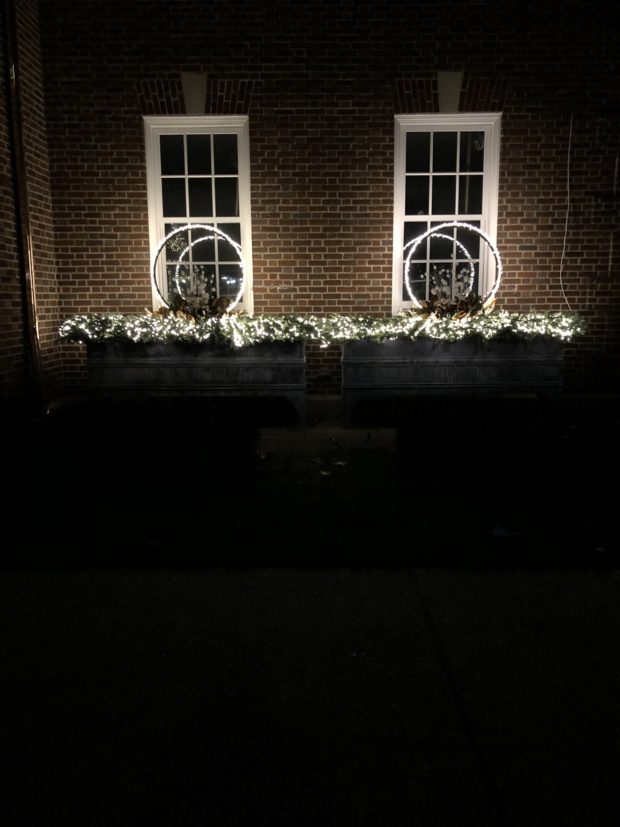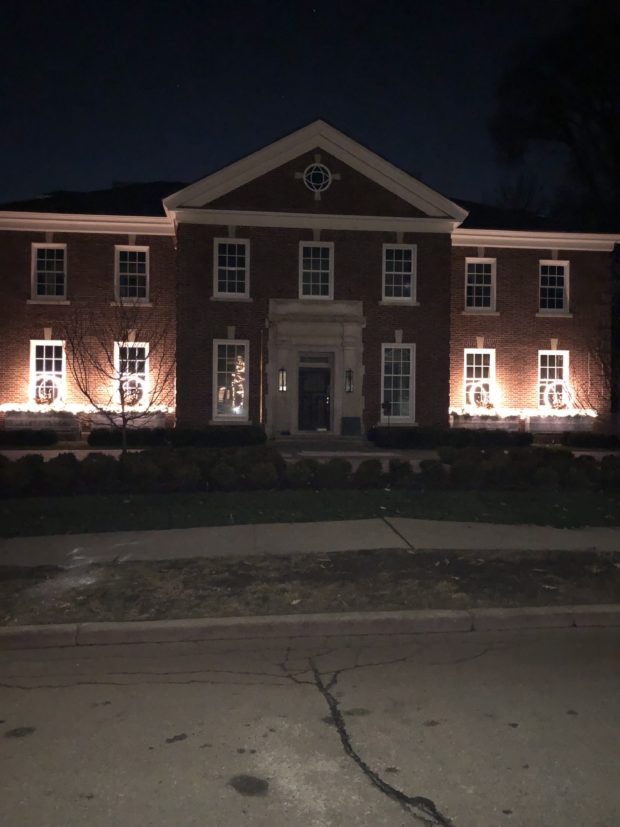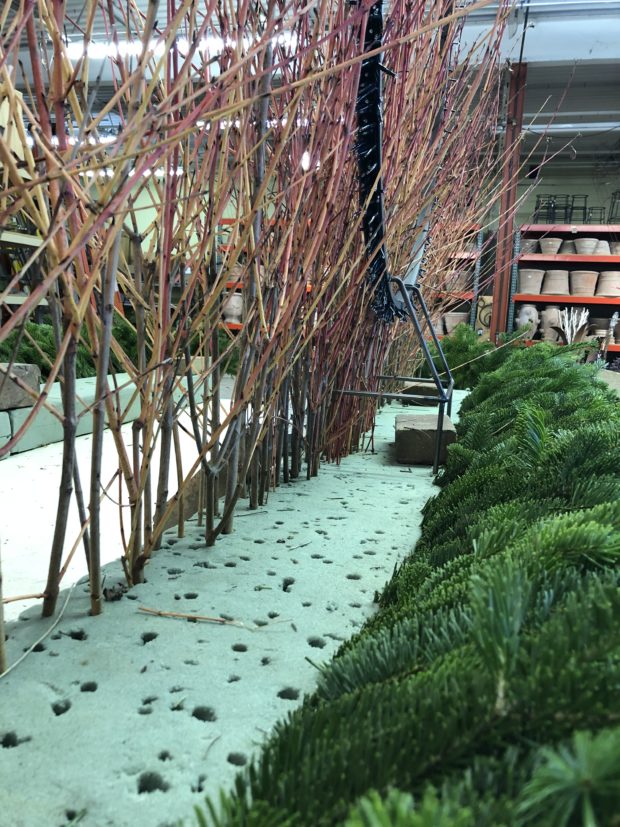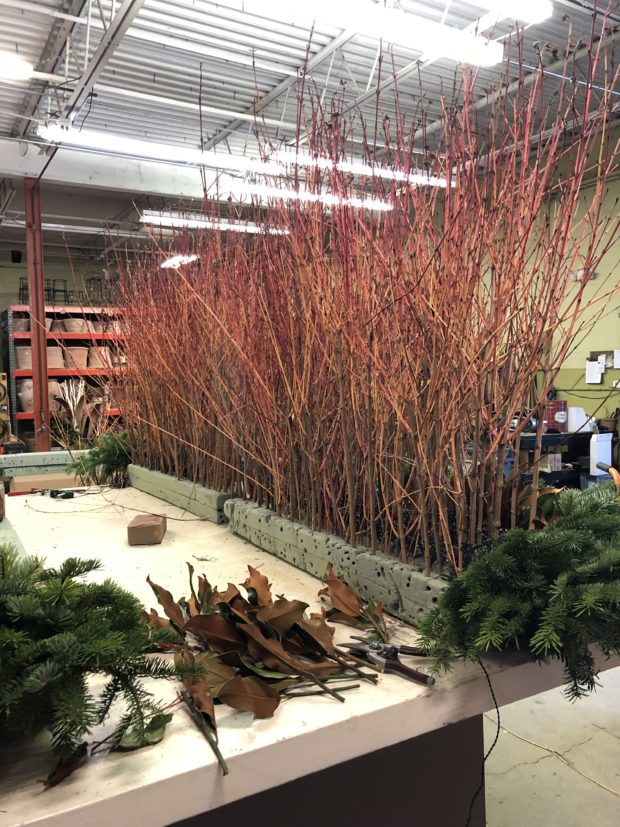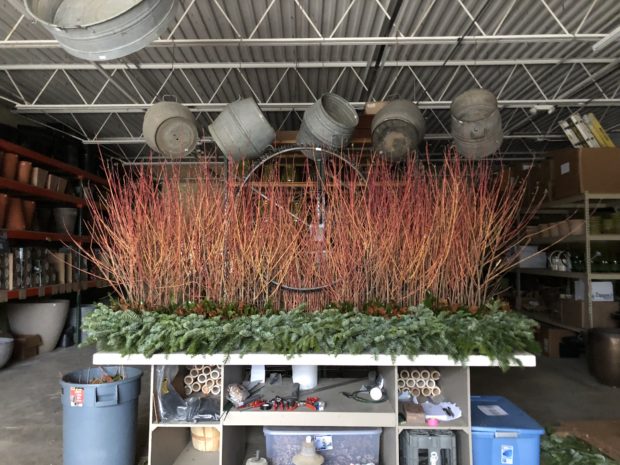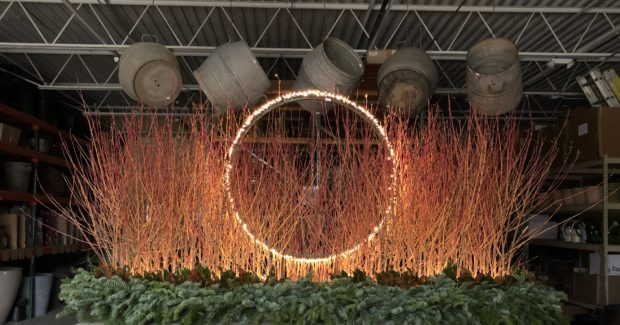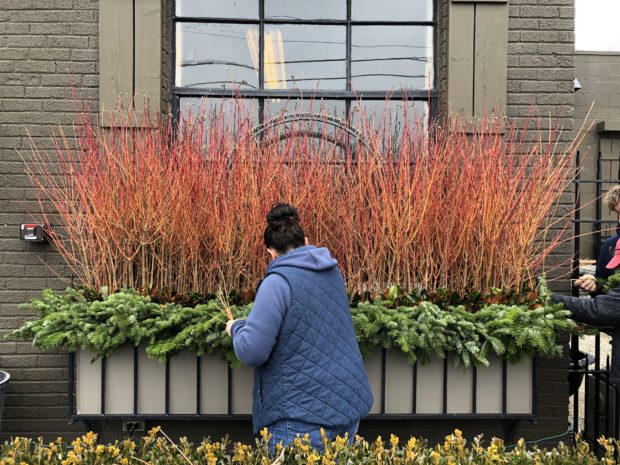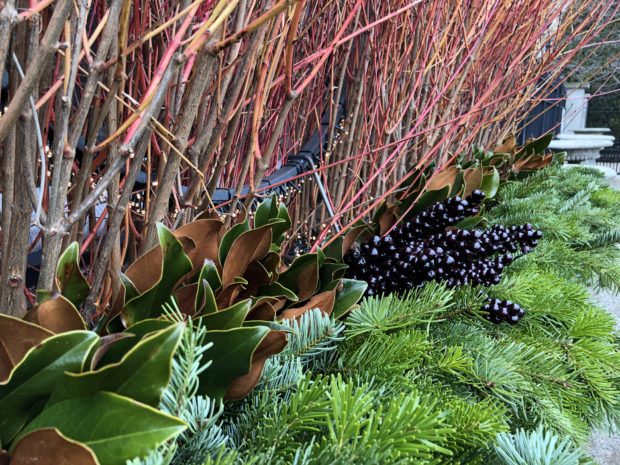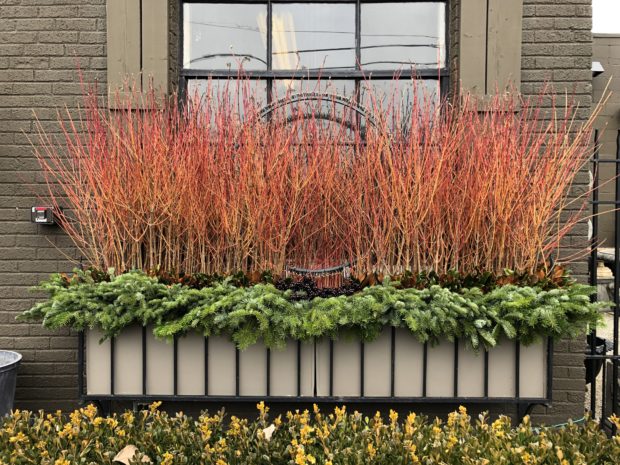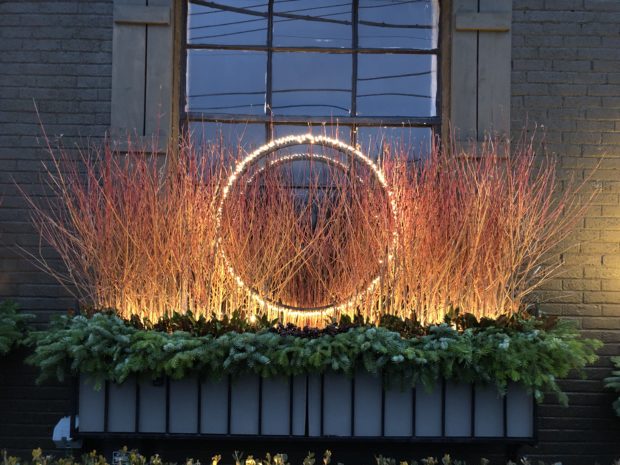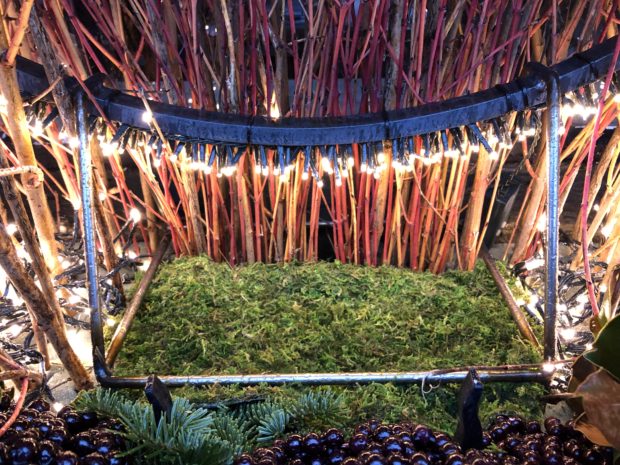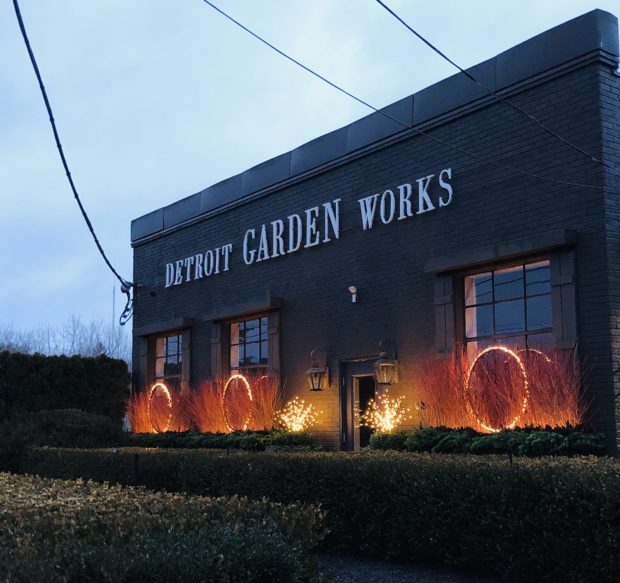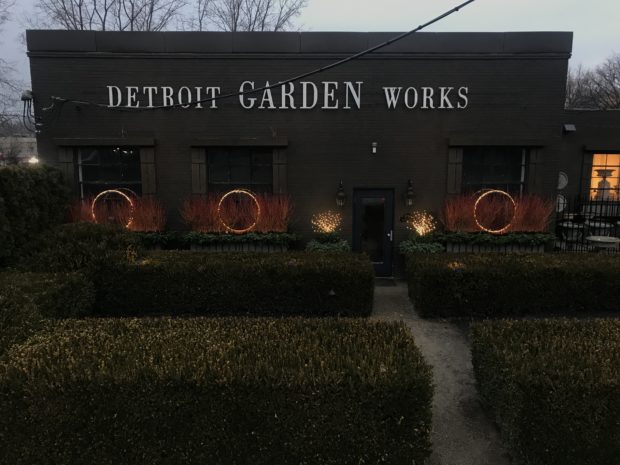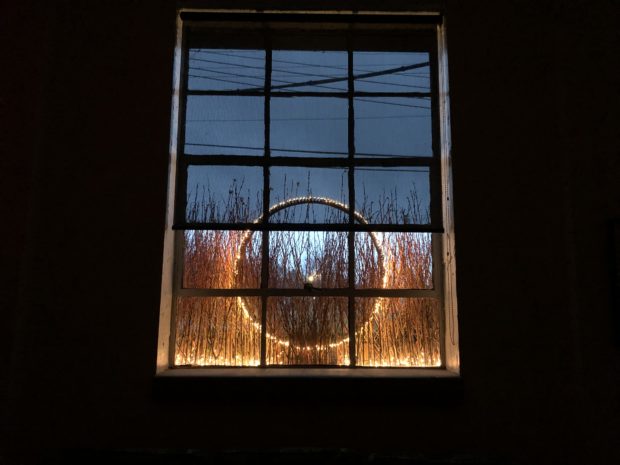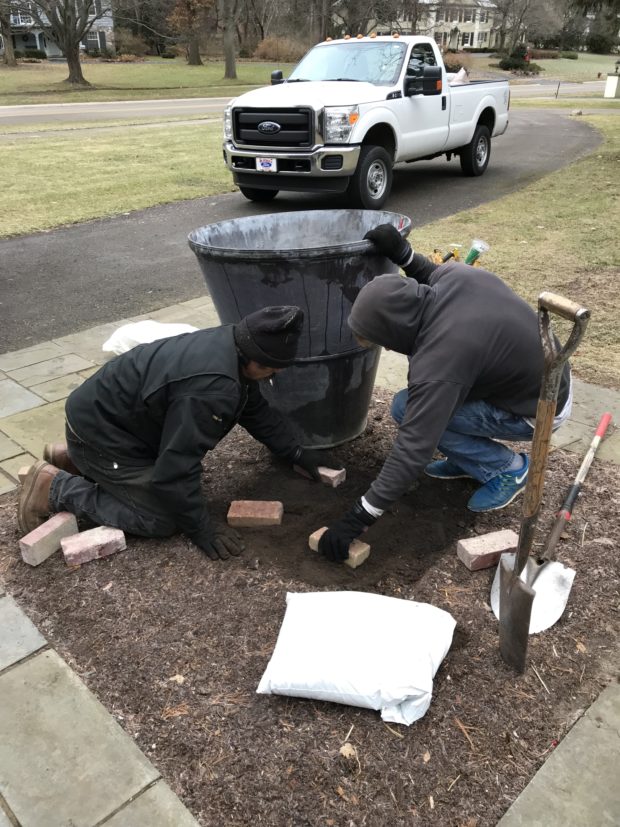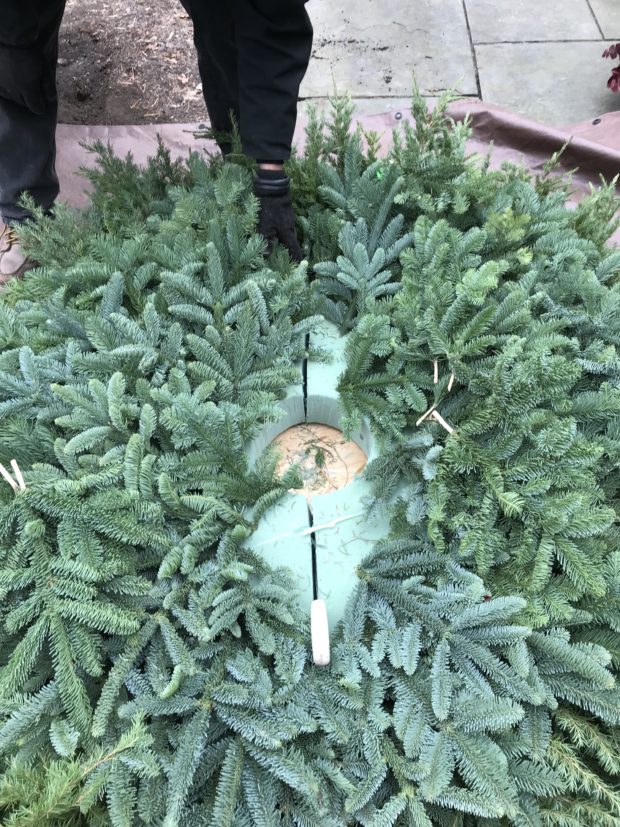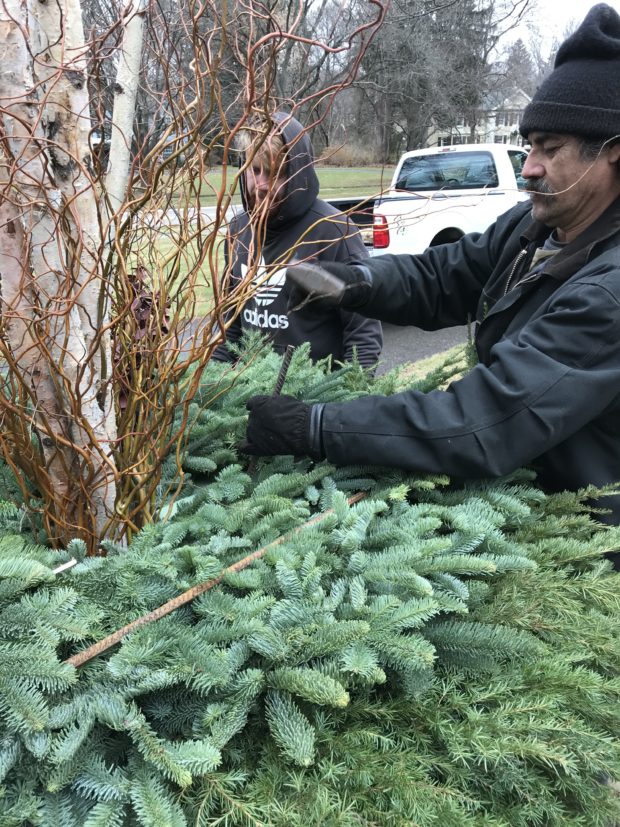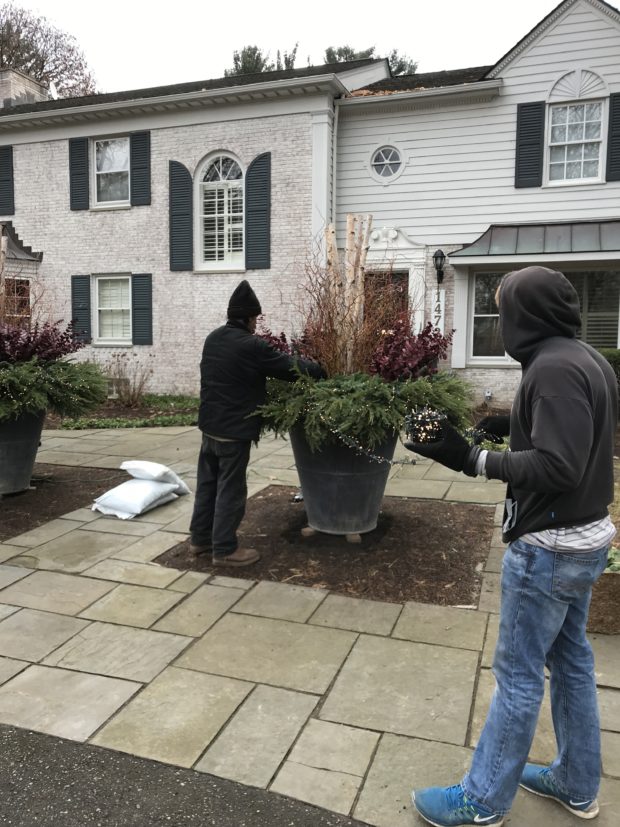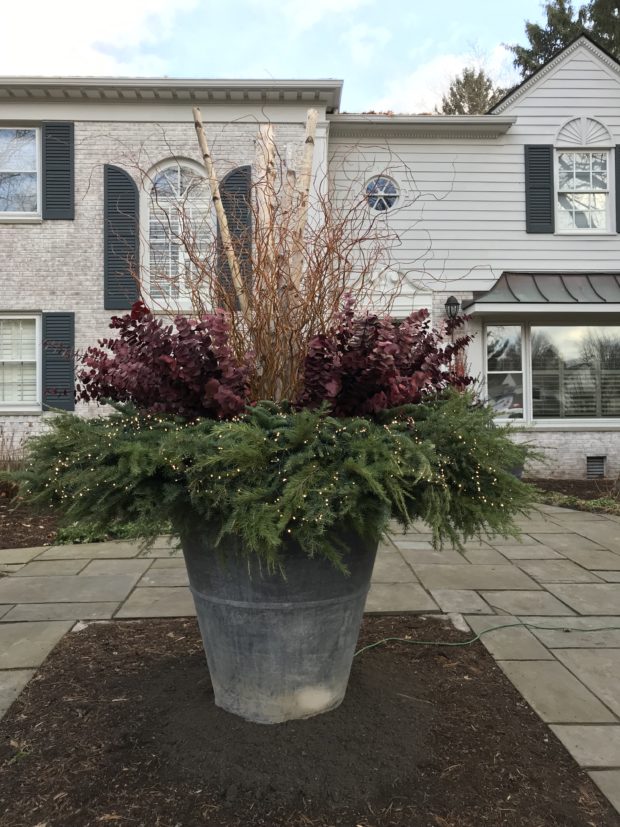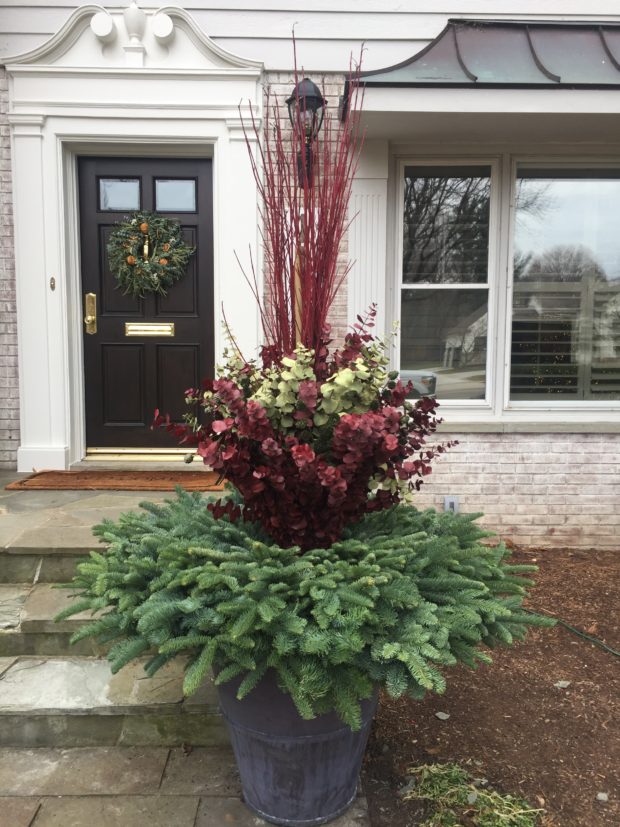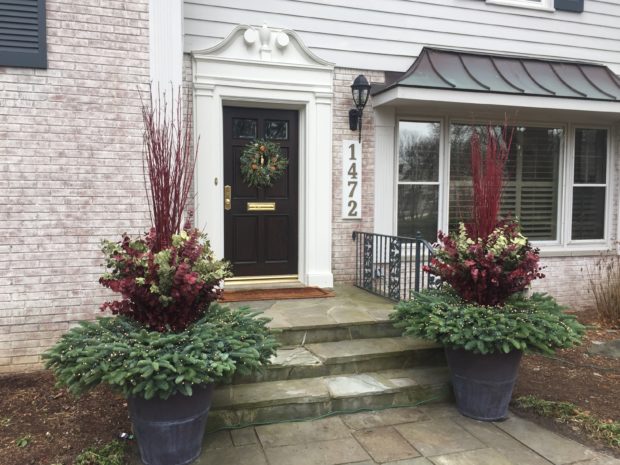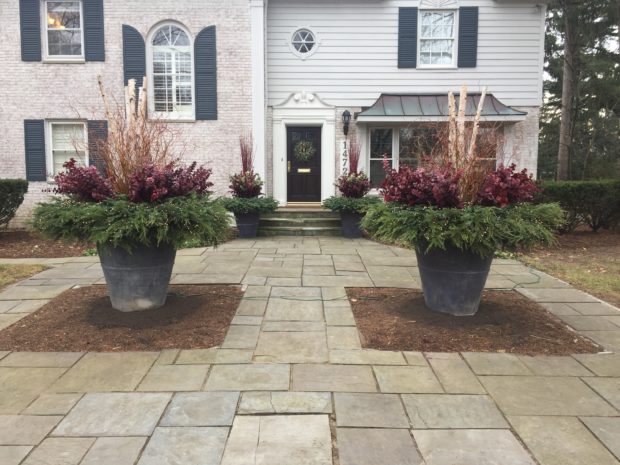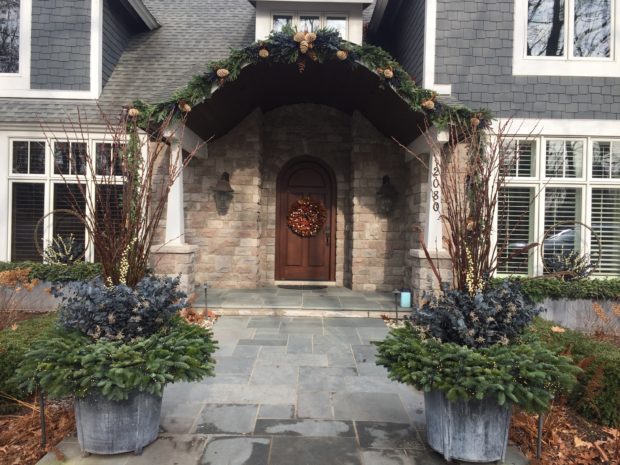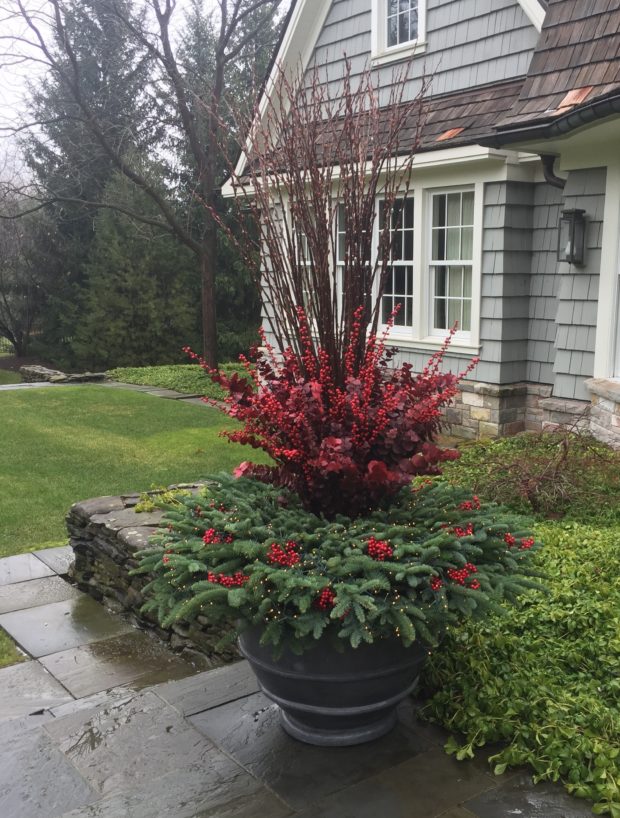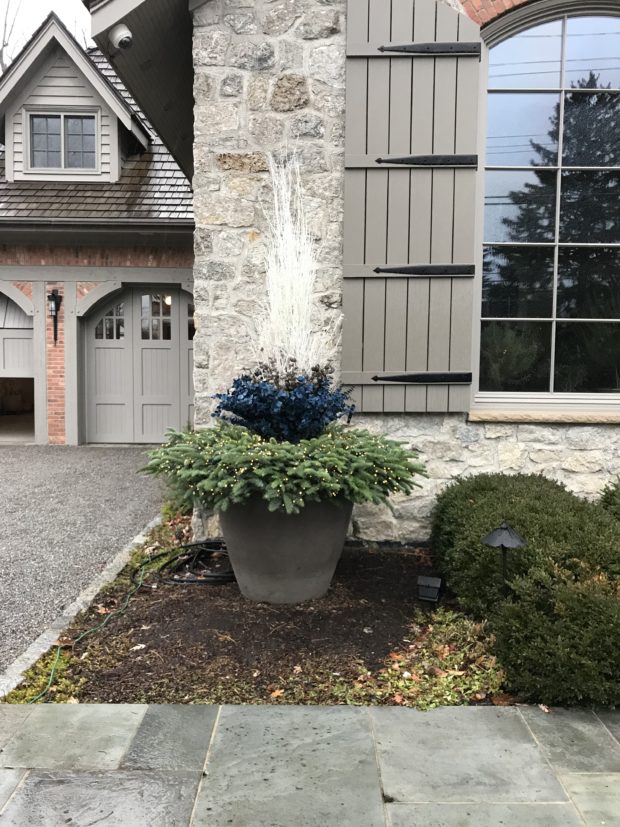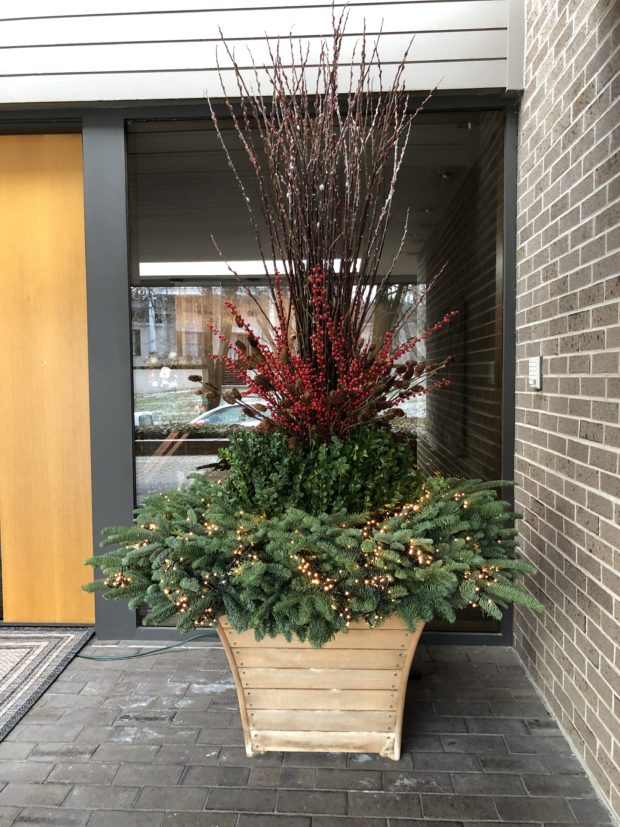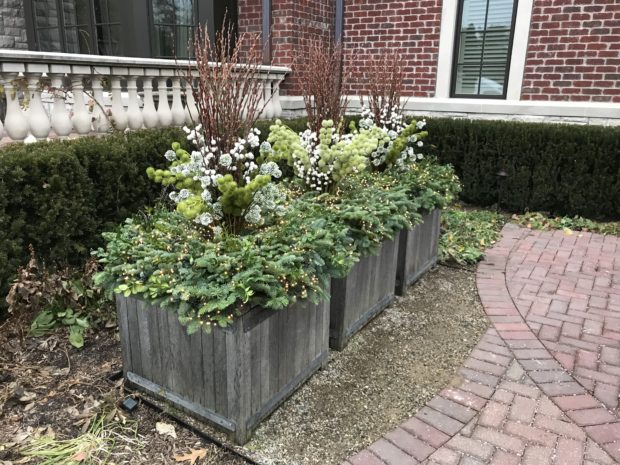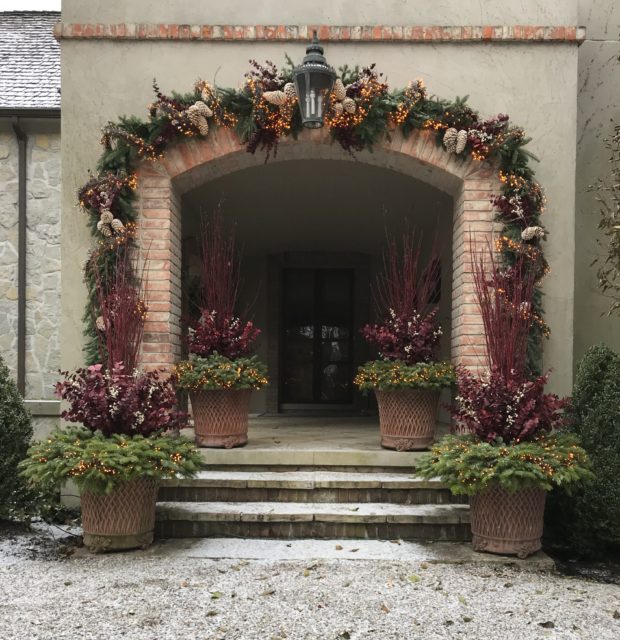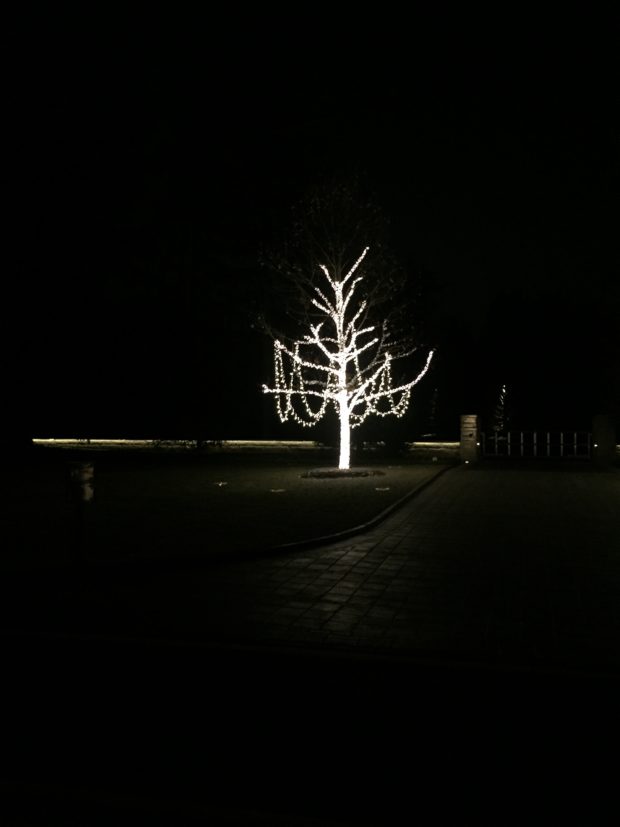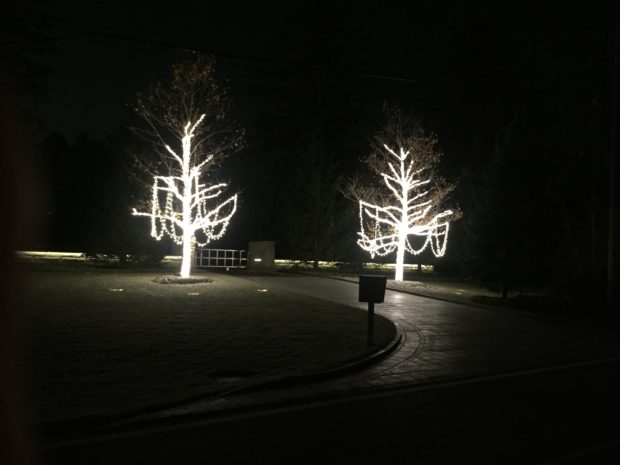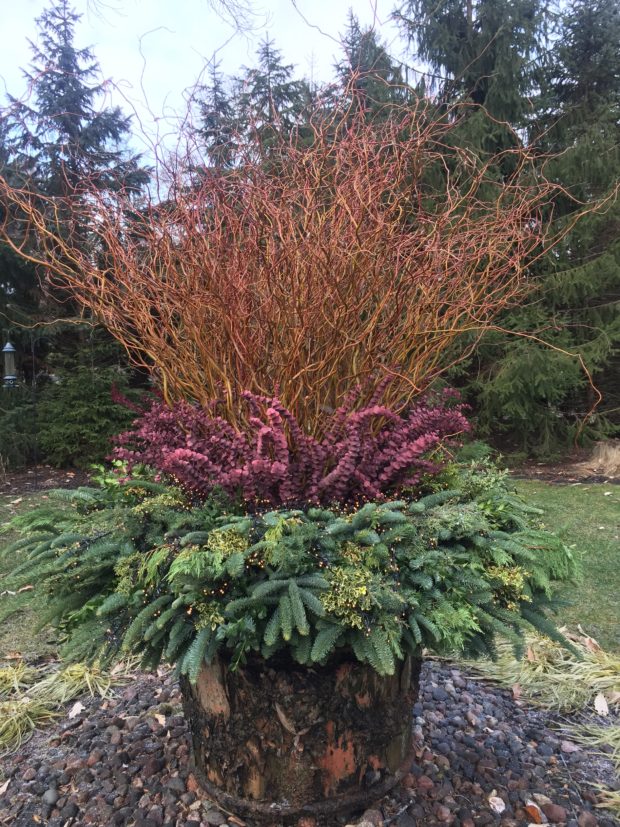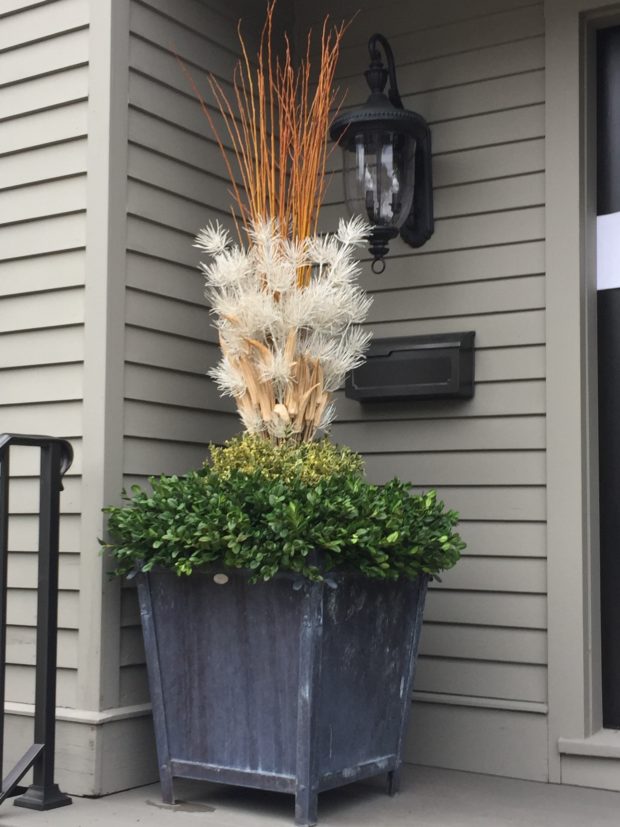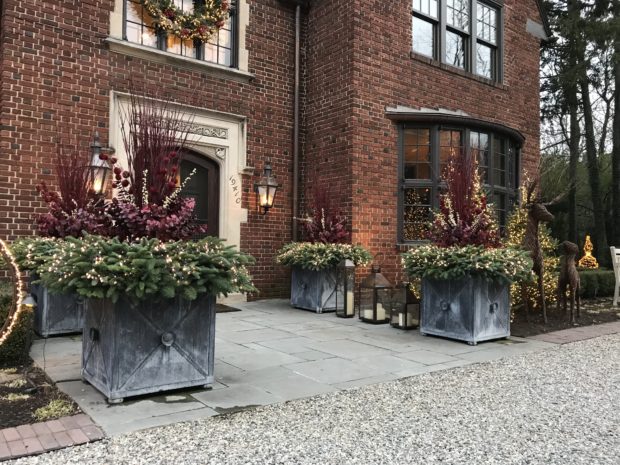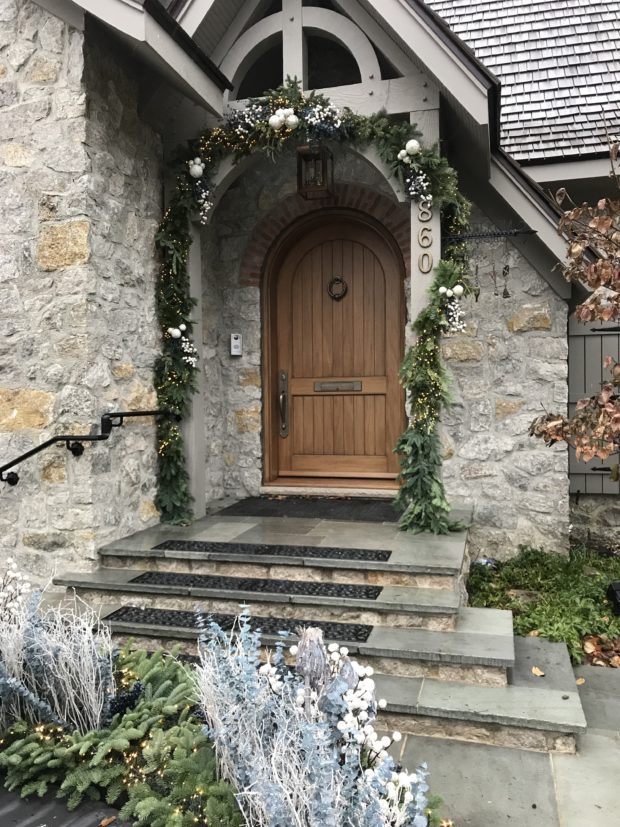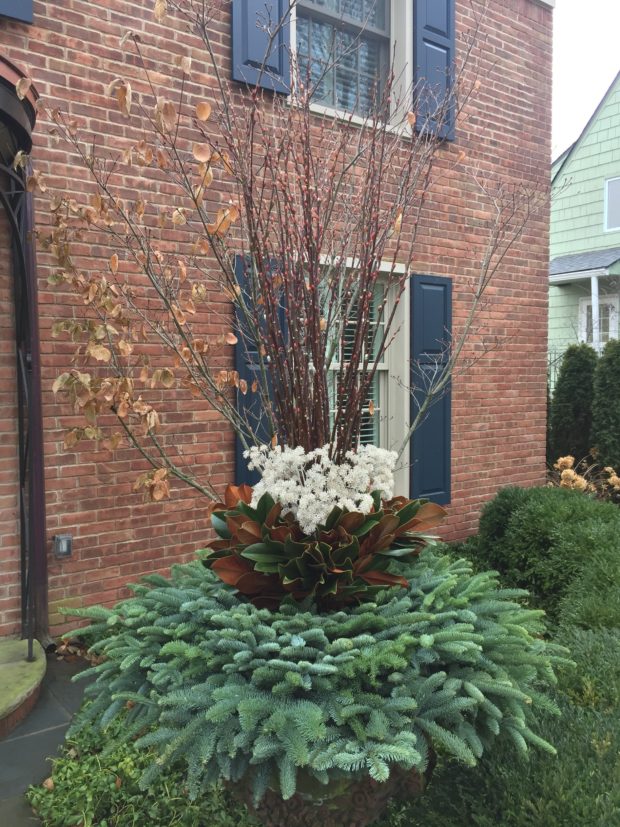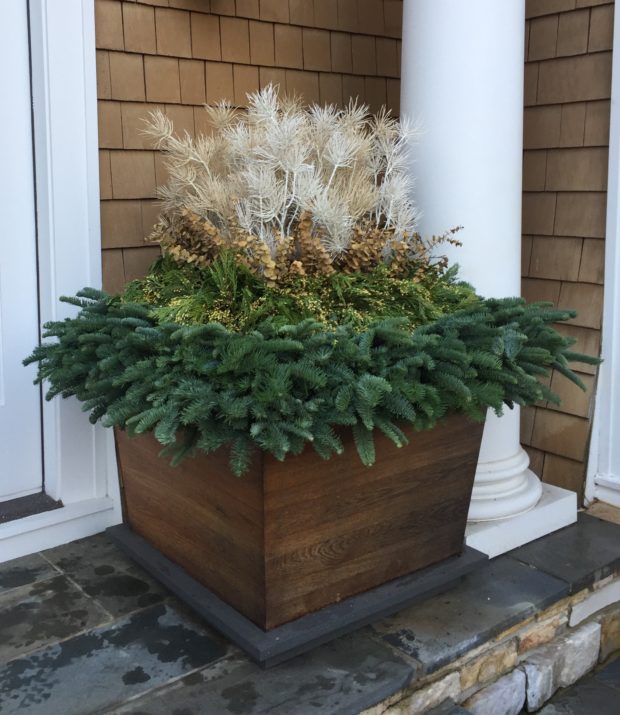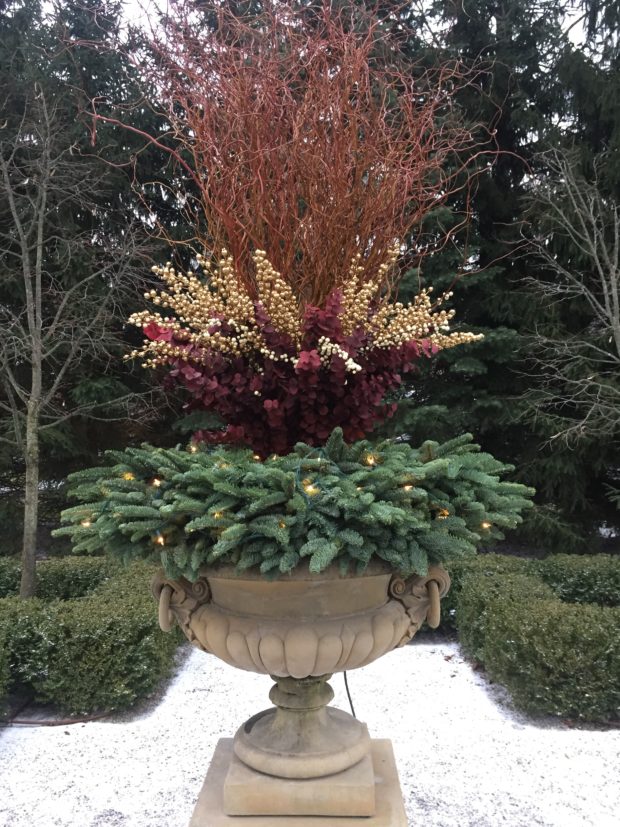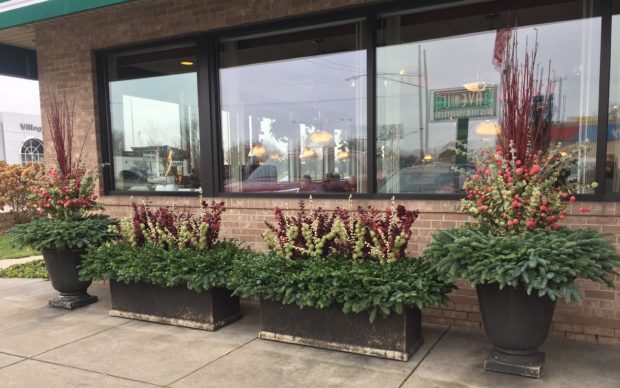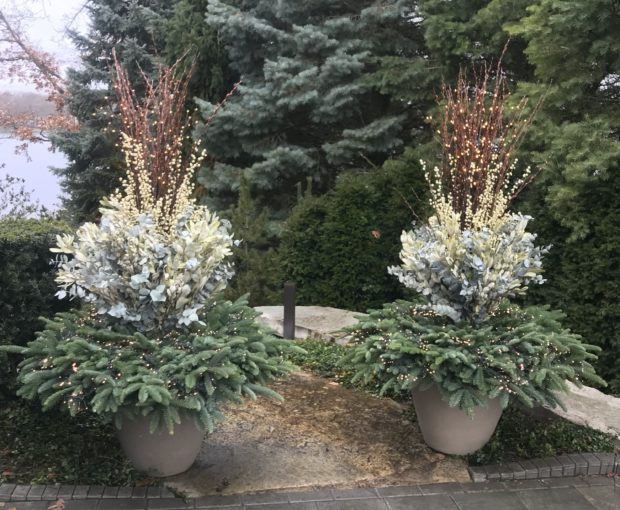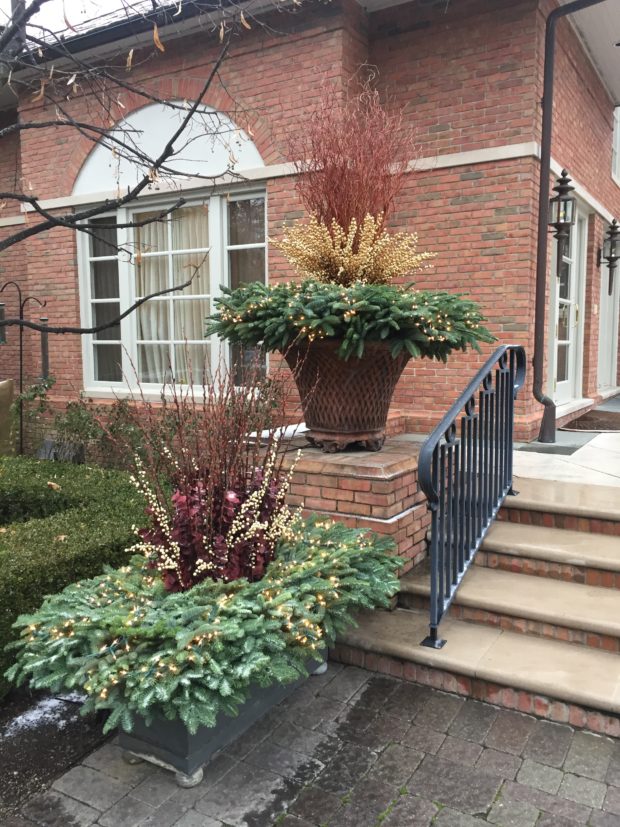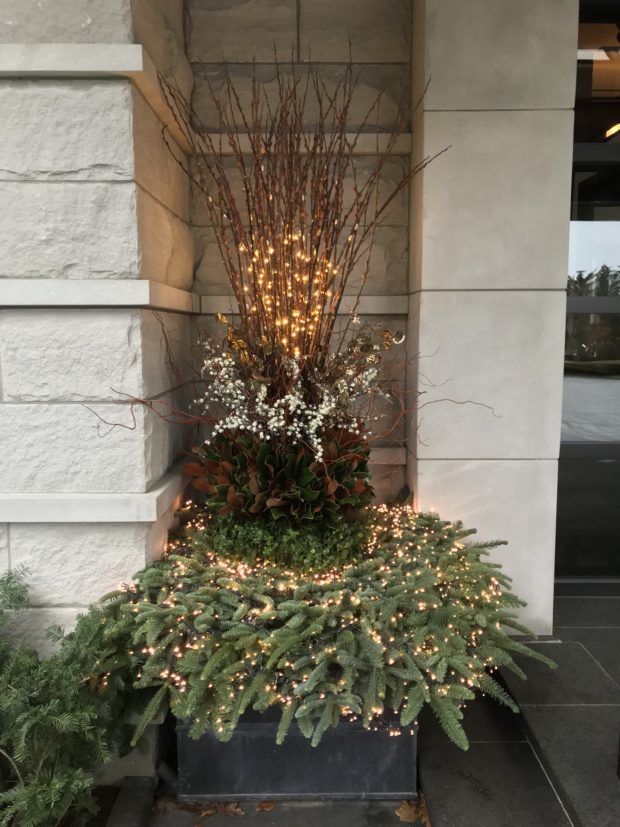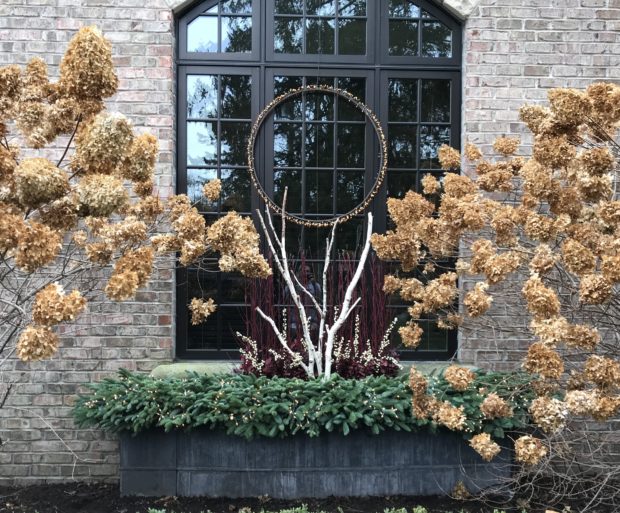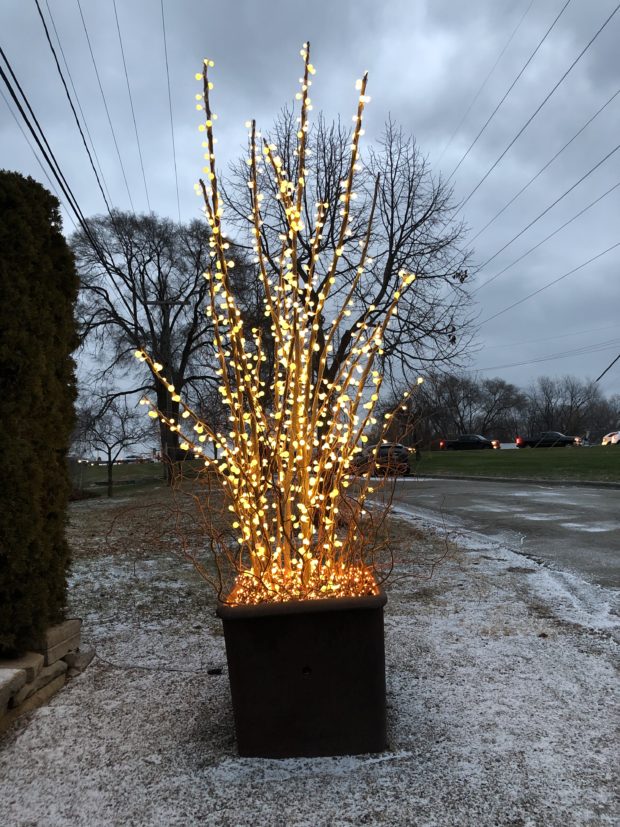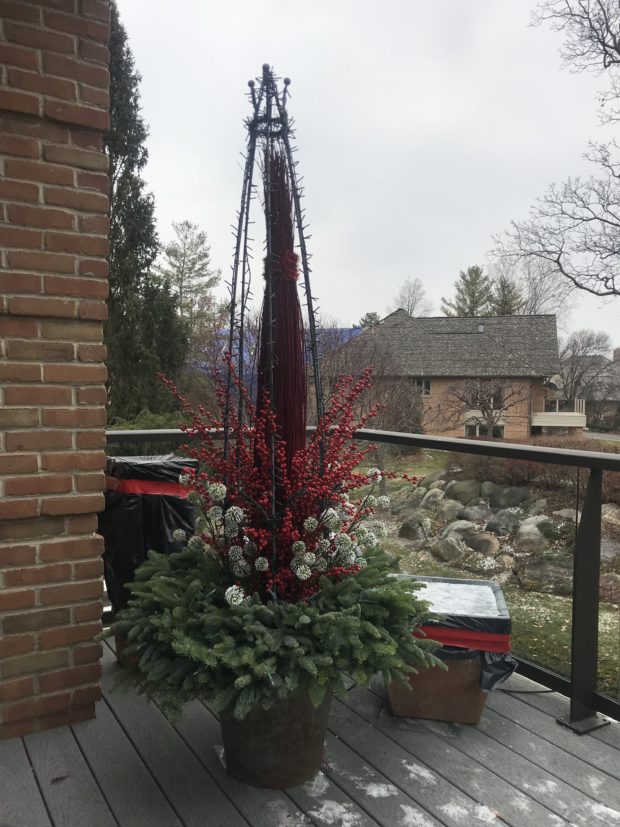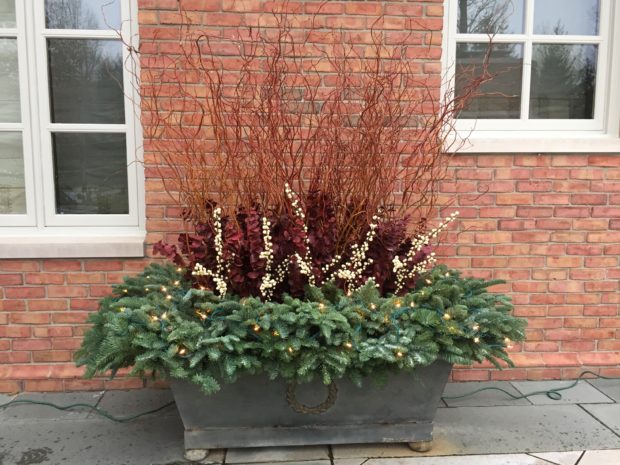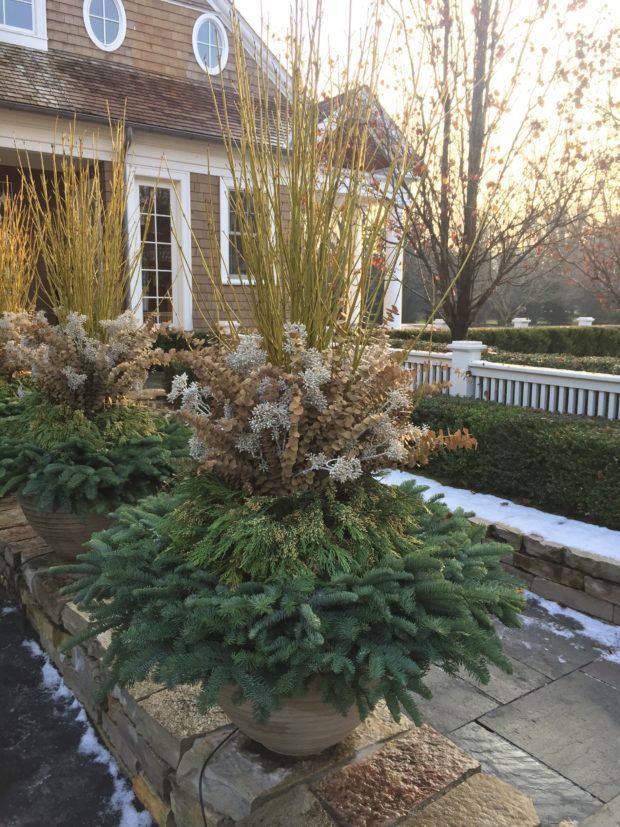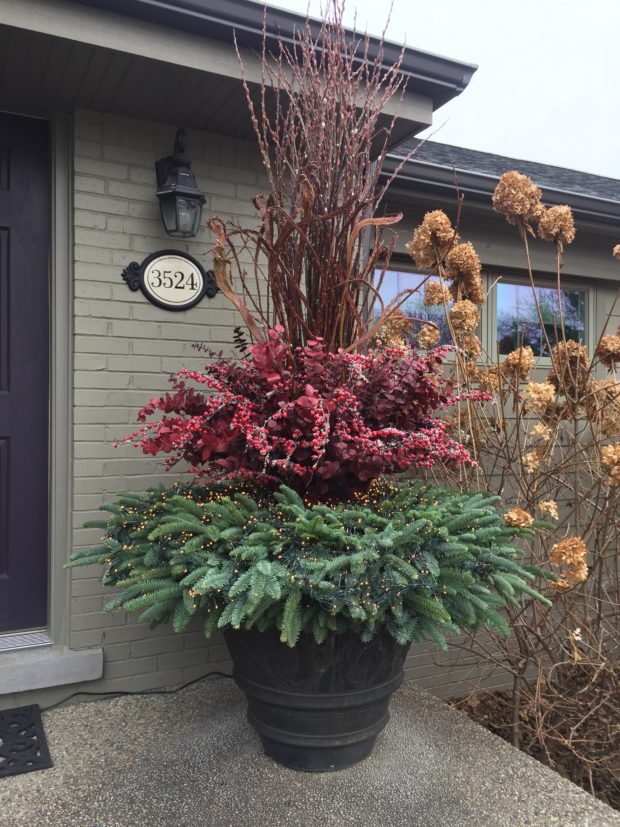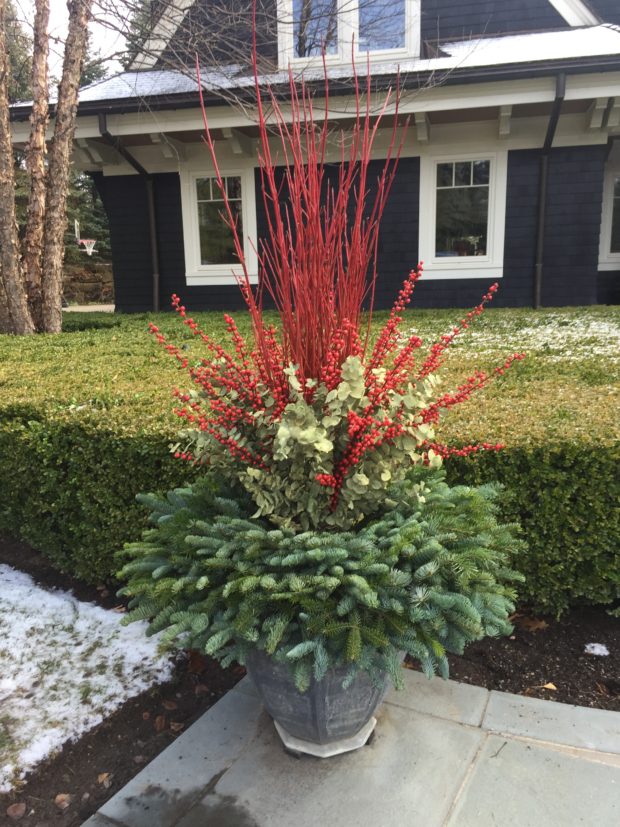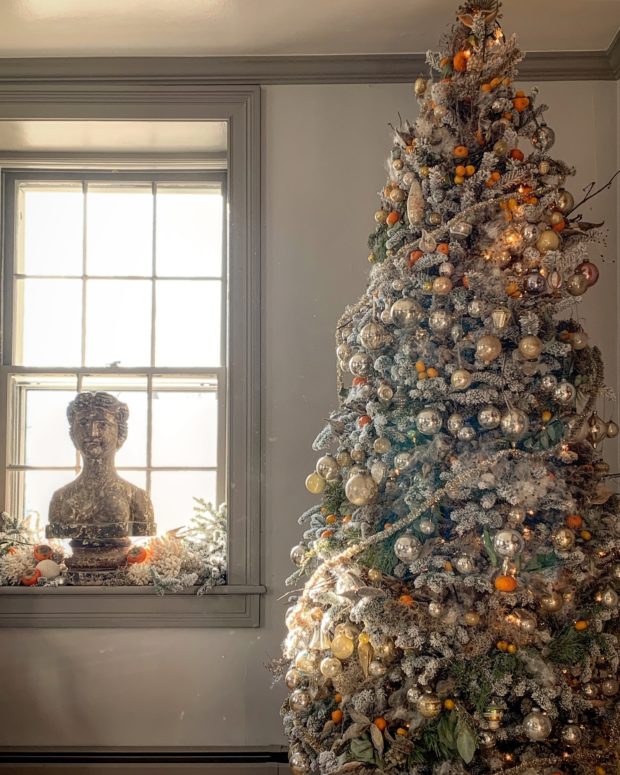 Dear friends of mine dress their home and table for the Christmas holidays in a way that never fails to astonish and delight me. I have written about their holiday at least three times before, but I knew this year would be special. They spent the last two Christmas holidays visiting family in the US and abroad. They would be home this year. M and I started talking about this year’s holiday in June, like we always do. I could say that talking goes on intermittently into the fall, but in fact, I am a listener, happy and intrigued to be privy to how his ideas evolve and gel. I am sure M2 is equally involved in this process. He is the more reserved of the two. The both of them are head over heels involved in the arts and design. They also have a sincere and passionate love of the landscape – this is how we came to meet, and fall for each other. Their holiday begins with the tree. Though they have an outstanding collection of vintage glass ornaments, the tree is always very different.
Dear friends of mine dress their home and table for the Christmas holidays in a way that never fails to astonish and delight me. I have written about their holiday at least three times before, but I knew this year would be special. They spent the last two Christmas holidays visiting family in the US and abroad. They would be home this year. M and I started talking about this year’s holiday in June, like we always do. I could say that talking goes on intermittently into the fall, but in fact, I am a listener, happy and intrigued to be privy to how his ideas evolve and gel. I am sure M2 is equally involved in this process. He is the more reserved of the two. The both of them are head over heels involved in the arts and design. They also have a sincere and passionate love of the landscape – this is how we came to meet, and fall for each other. Their holiday begins with the tree. Though they have an outstanding collection of vintage glass ornaments, the tree is always very different.
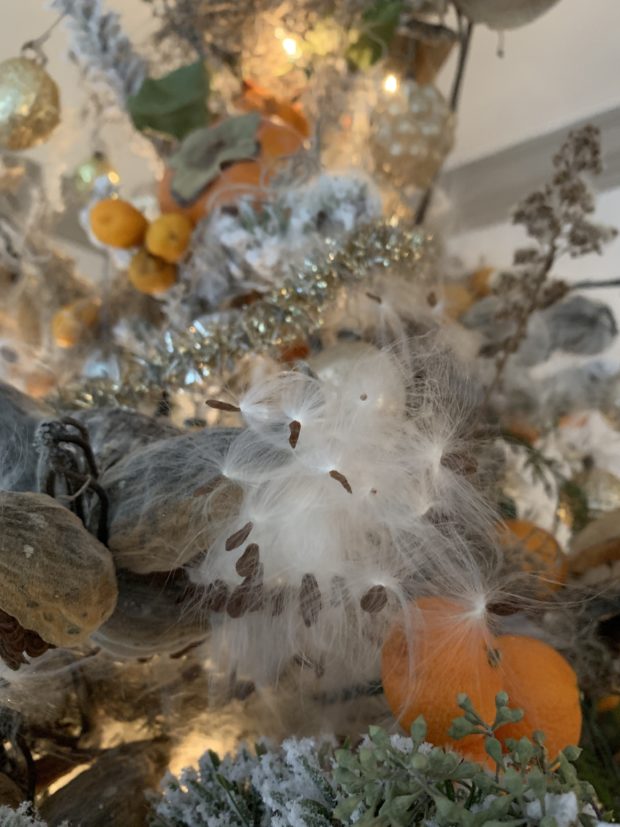 Their love of nature and the garden is always a substantial part of their tree. They live on a large property in the country. Most of that property is wild. This year’s tree is chock full of the seedpods from butterfly weed, and assorted other weedy dry stems. The addition of the wild remains of plants foraged from their own property took a few intensely felt weekends. I truly admire and respect that they are able to set aside the demands of their professional lives, and give their all to the design and creation of this tree. It is a tour de force on so many levels.
Their love of nature and the garden is always a substantial part of their tree. They live on a large property in the country. Most of that property is wild. This year’s tree is chock full of the seedpods from butterfly weed, and assorted other weedy dry stems. The addition of the wild remains of plants foraged from their own property took a few intensely felt weekends. I truly admire and respect that they are able to set aside the demands of their professional lives, and give their all to the design and creation of this tree. It is a tour de force on so many levels.
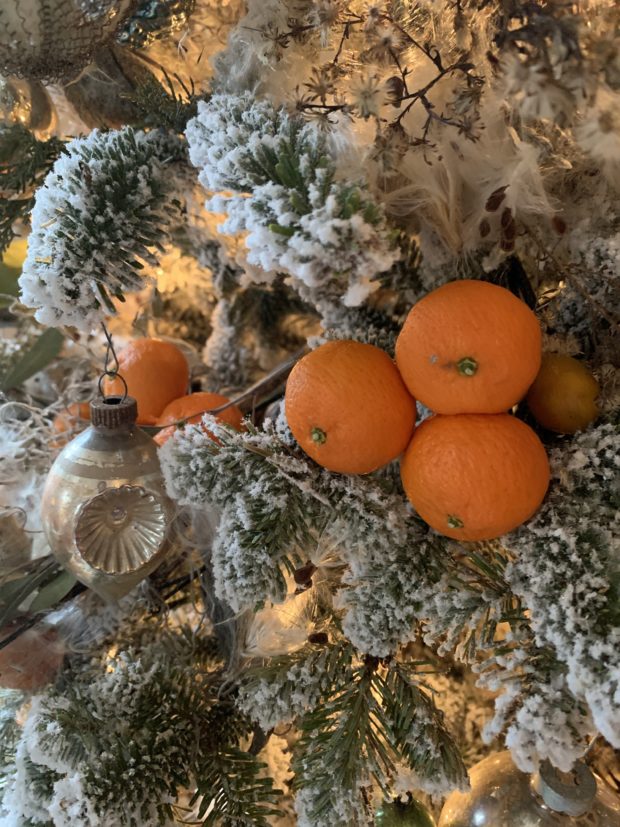 I knew M had a plan to add clementines and persimmons to the mix. He later added mini Kishu mandarin oranges and kumquats. I had my doubts about how that would work, but I kept that to myself. At the same time, I knew he was shopping every grocery store and farmers markets in his area for those orange fruits. I greatly respect his eye. All it takes to be open to anything is the intent to be open.
I knew M had a plan to add clementines and persimmons to the mix. He later added mini Kishu mandarin oranges and kumquats. I had my doubts about how that would work, but I kept that to myself. At the same time, I knew he was shopping every grocery store and farmers markets in his area for those orange fruits. I greatly respect his eye. All it takes to be open to anything is the intent to be open.
 The result is unique to them, and their point of view. Stunning, every square inch of it. Their history, interests and passion for the arts and the garden resulted in a holiday expression of great beauty.
The result is unique to them, and their point of view. Stunning, every square inch of it. Their history, interests and passion for the arts and the garden resulted in a holiday expression of great beauty.
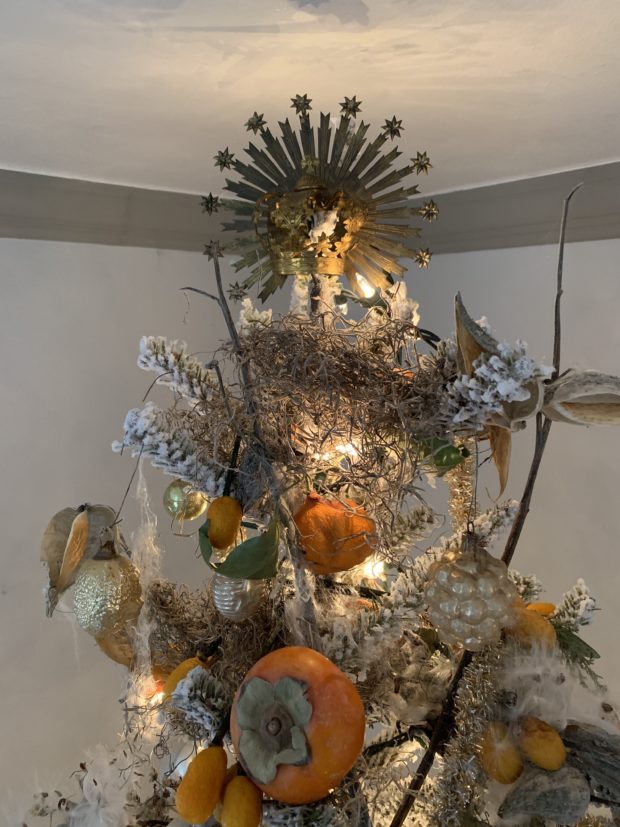 This New Year’s Day, I am thinking about those projects this past year that truly engaged me. Those projects that speak to the best, most inventive, and imaginative. And those projects that are created by the love of the landscape on both sides of the design equation. I have many to thank, and much to be thankful for.
This New Year’s Day, I am thinking about those projects this past year that truly engaged me. Those projects that speak to the best, most inventive, and imaginative. And those projects that are created by the love of the landscape on both sides of the design equation. I have many to thank, and much to be thankful for.
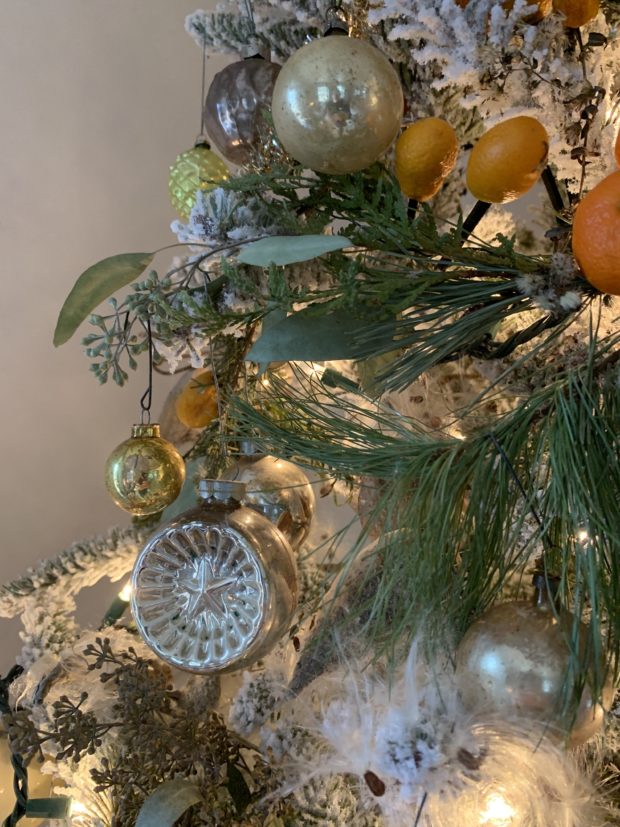 As for the holiday created by my friends- thank you. It is a feast for the eyes, the heart and the soul.
As for the holiday created by my friends- thank you. It is a feast for the eyes, the heart and the soul.
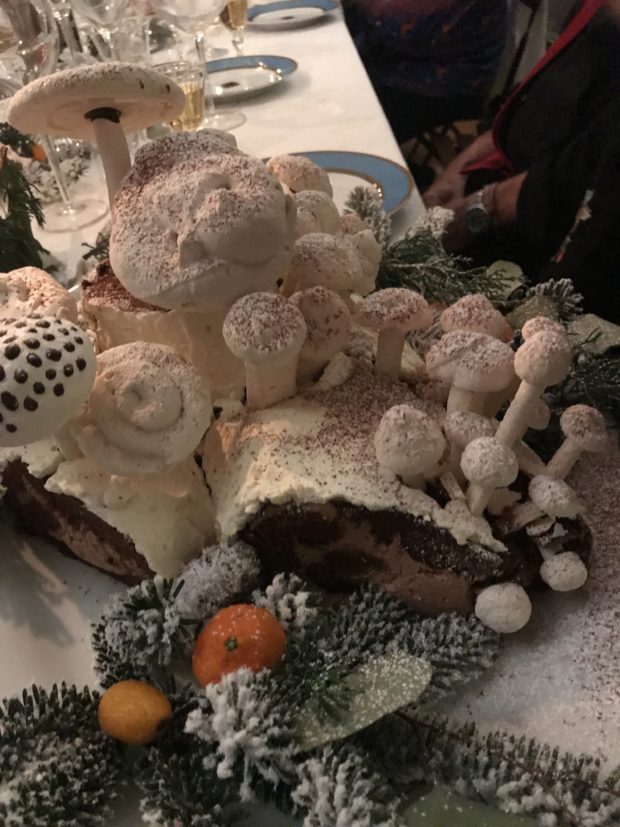 The buche de Noel, a culinary creation of theirs – exquisite.
The buche de Noel, a culinary creation of theirs – exquisite.
